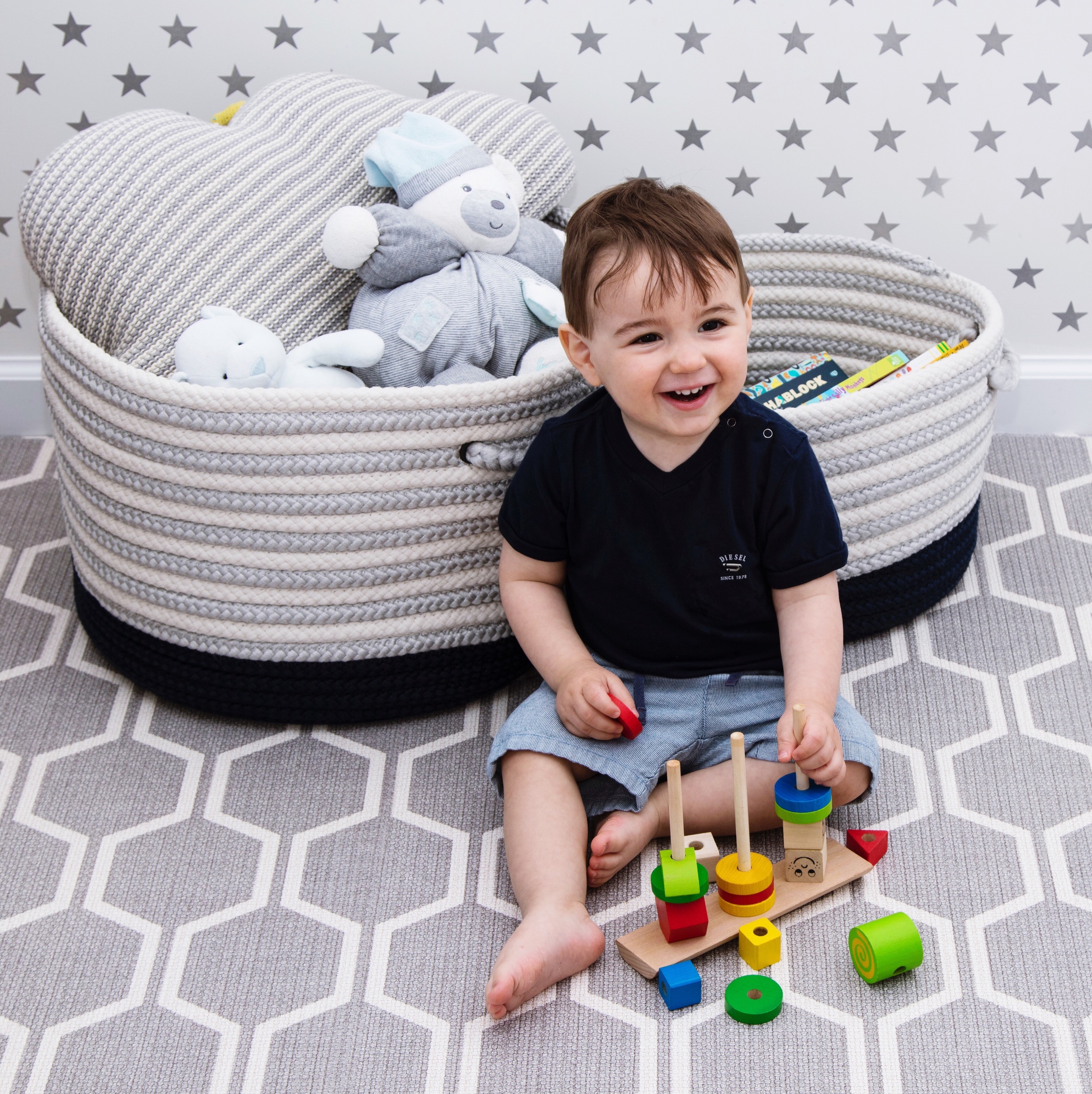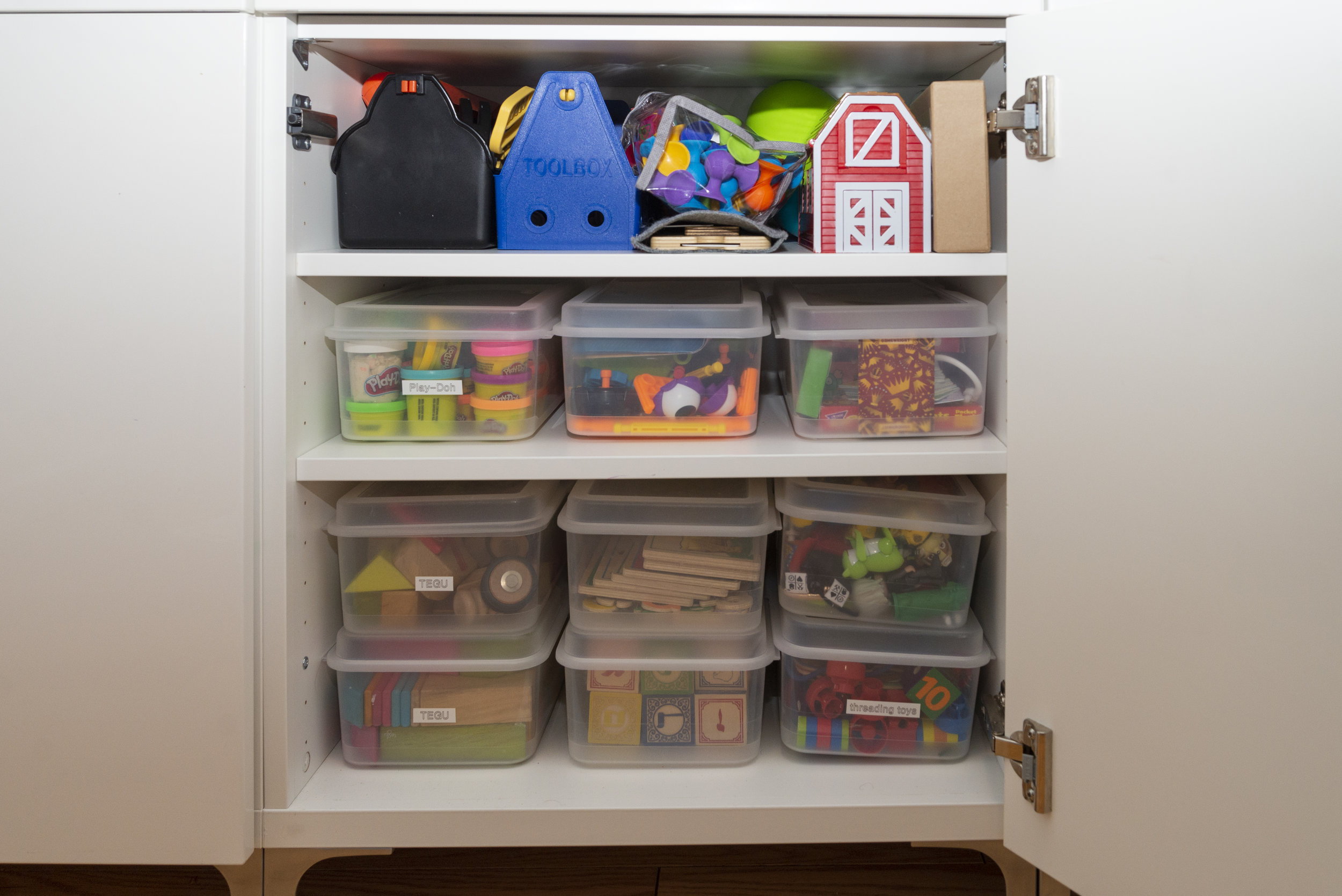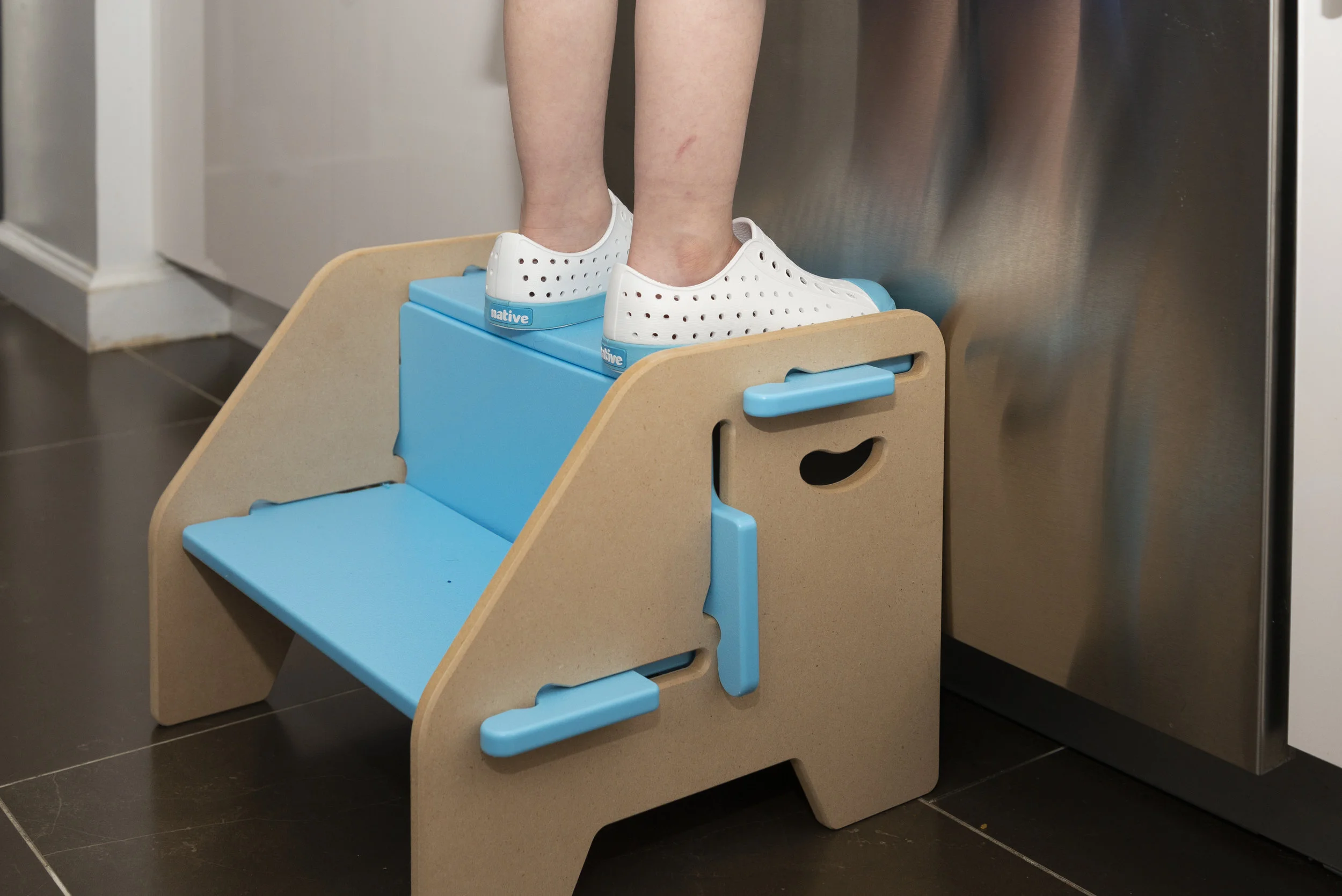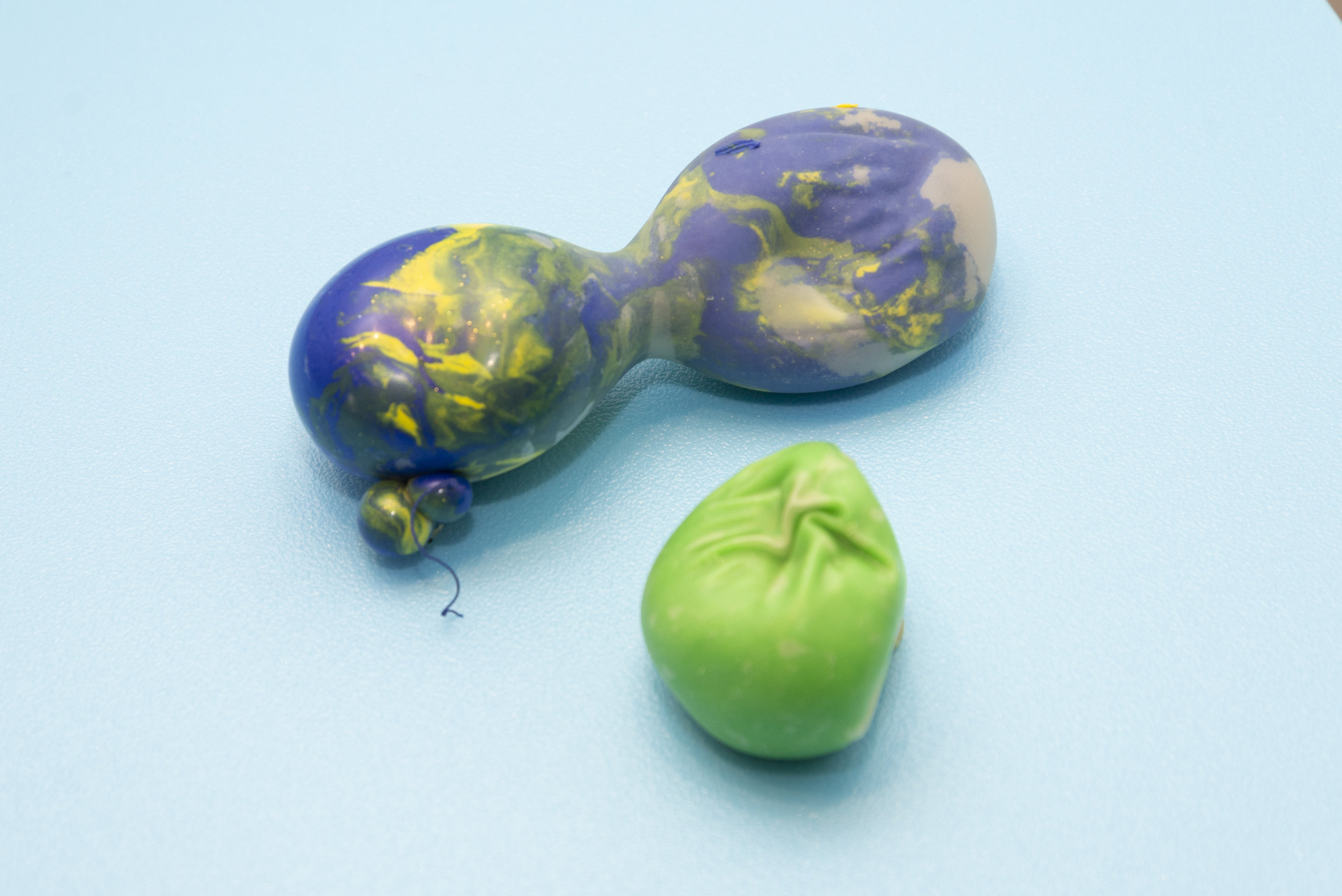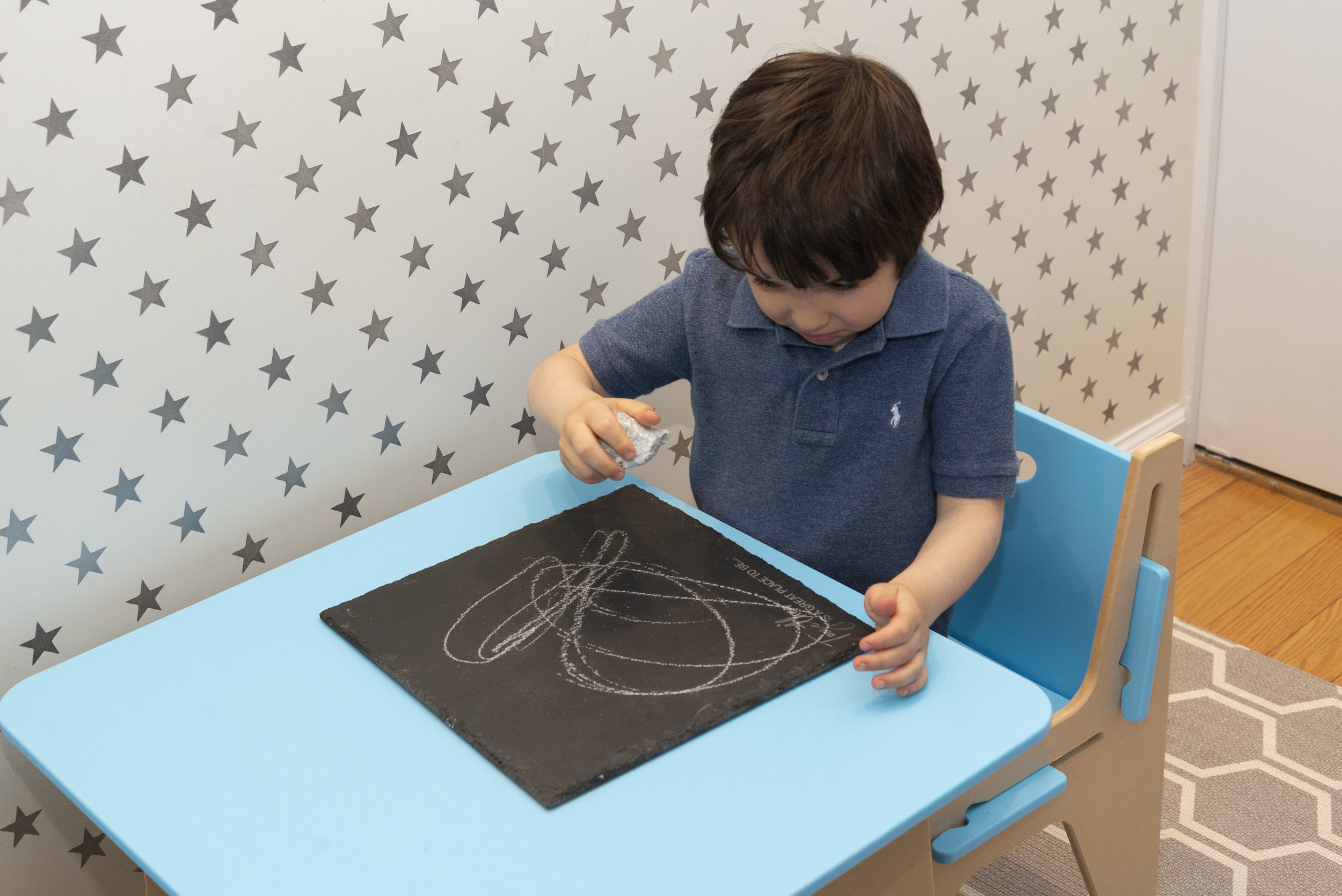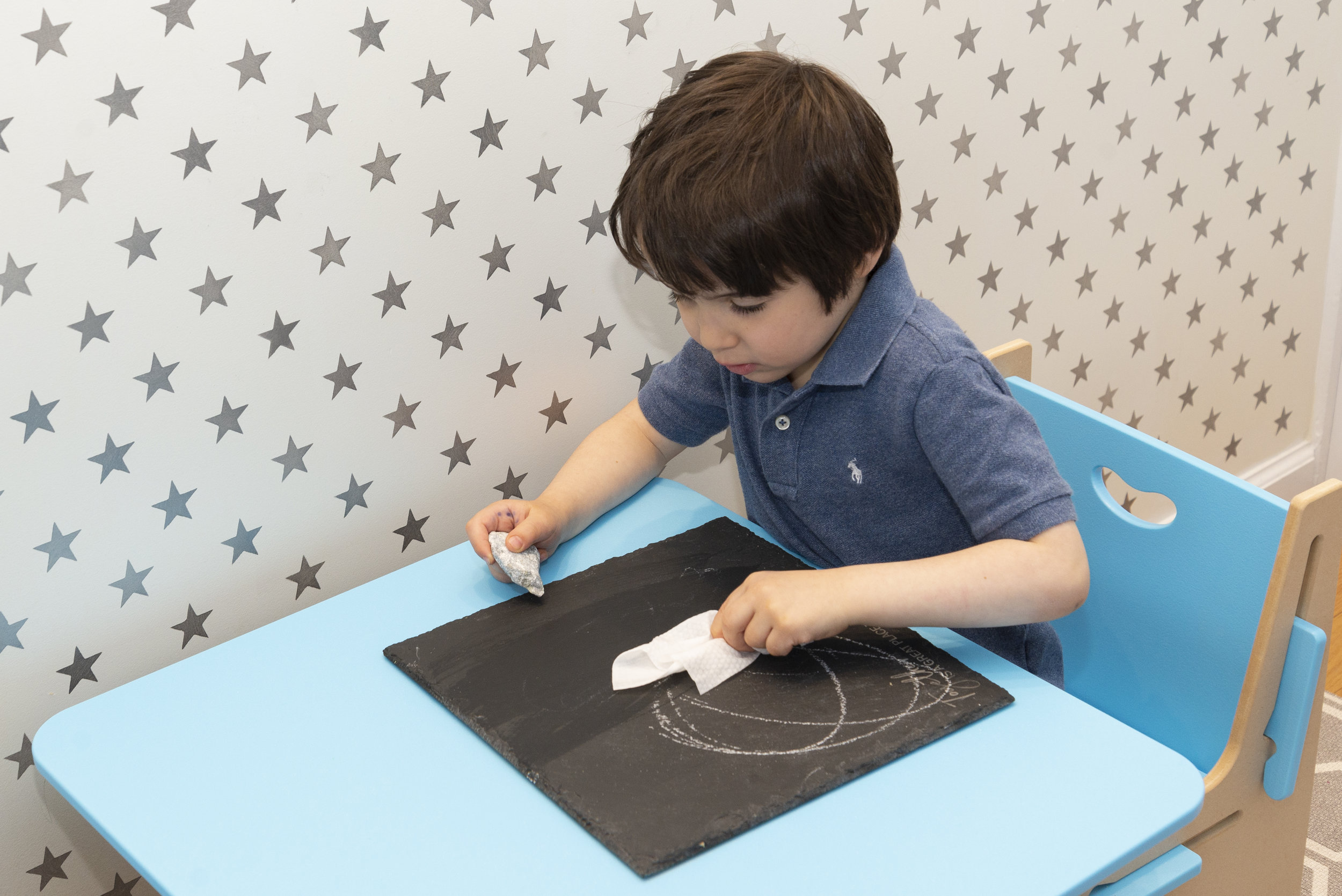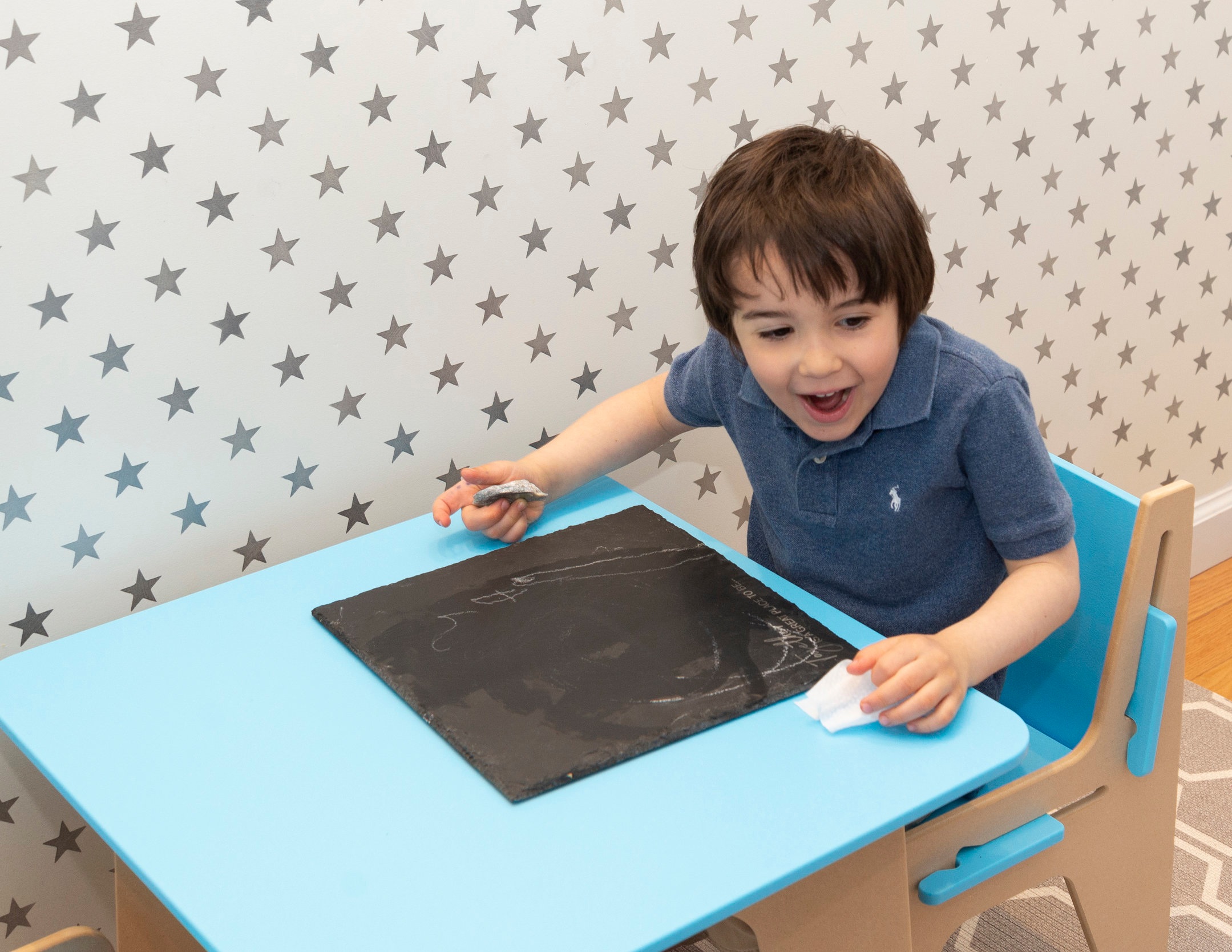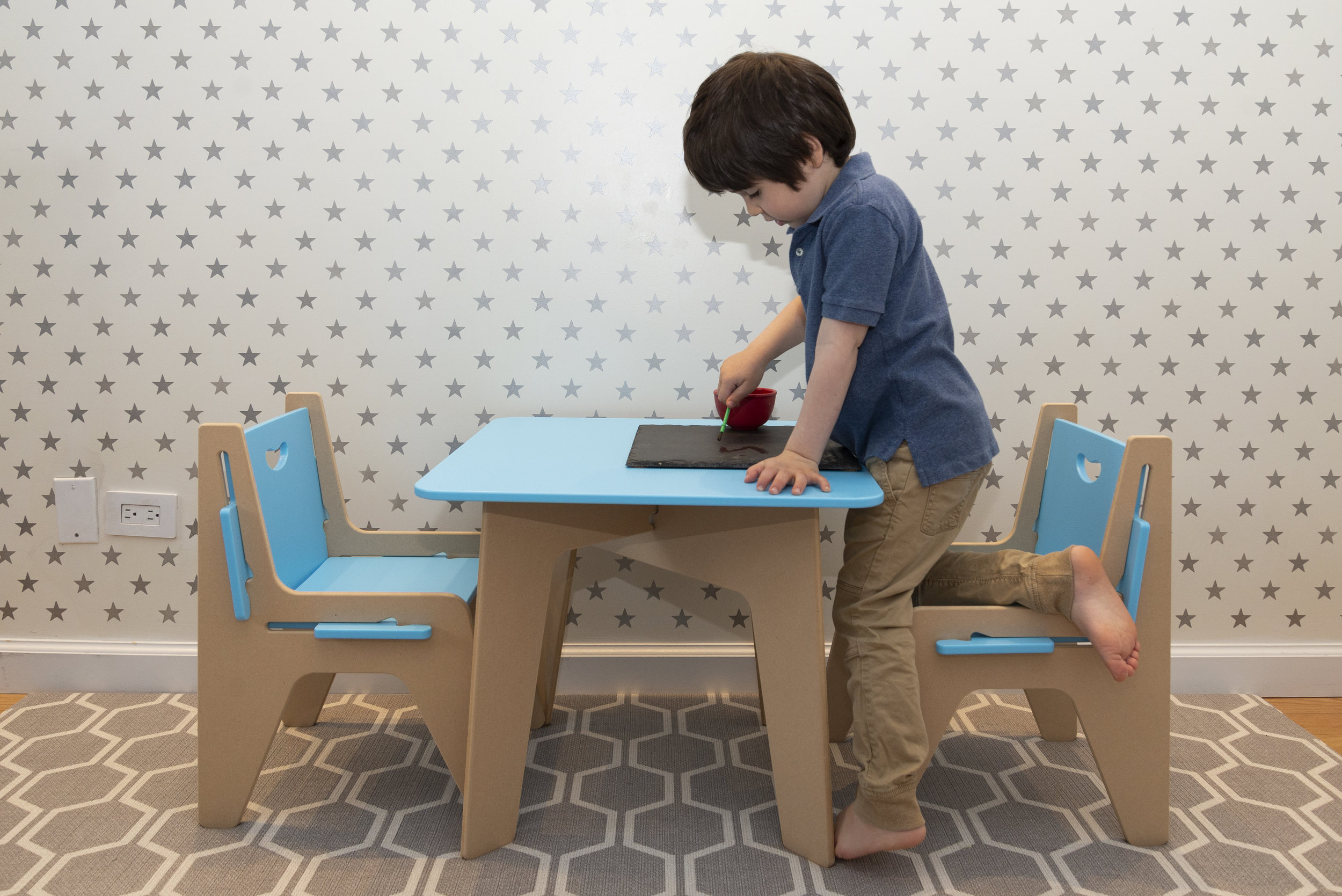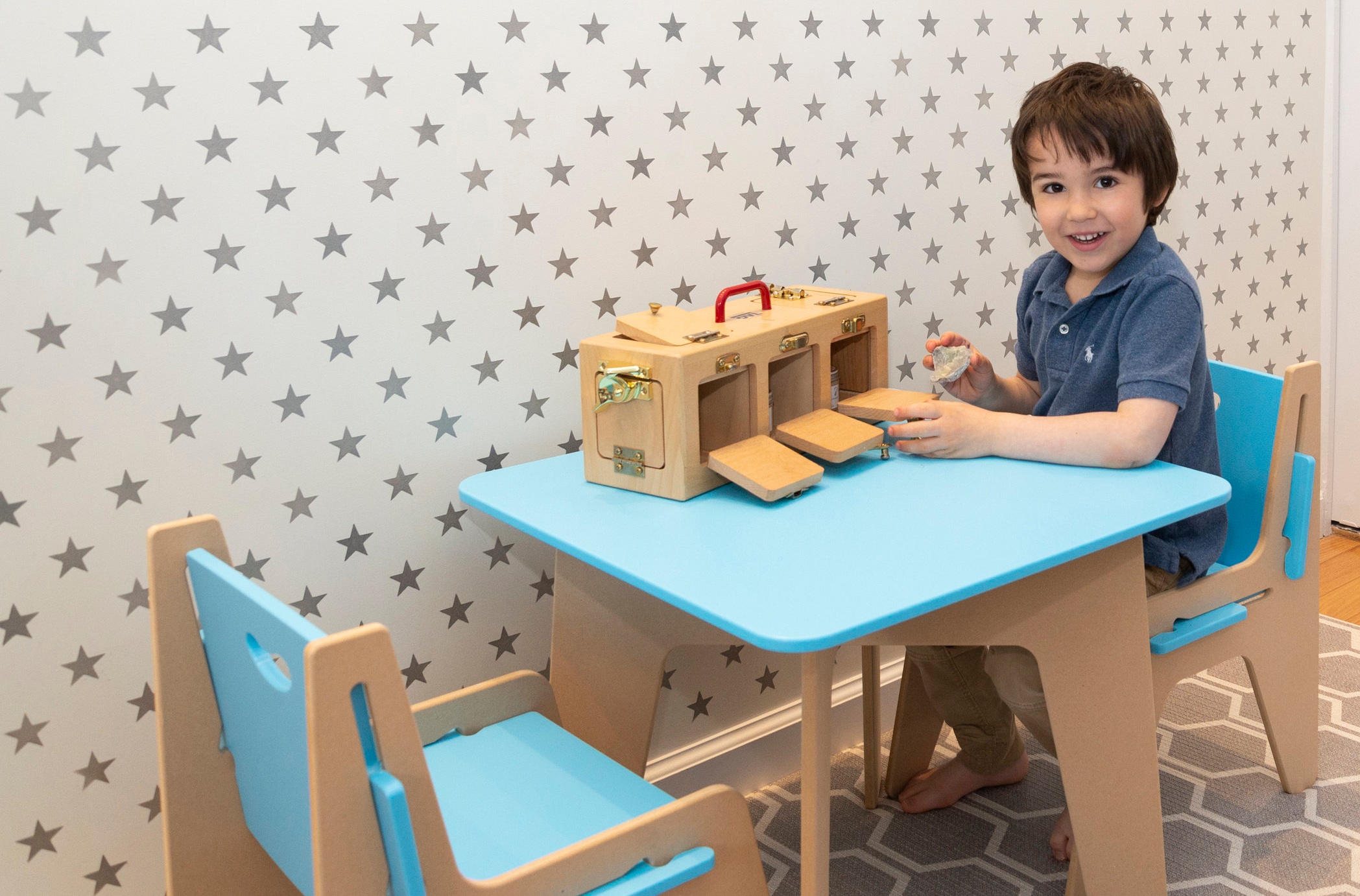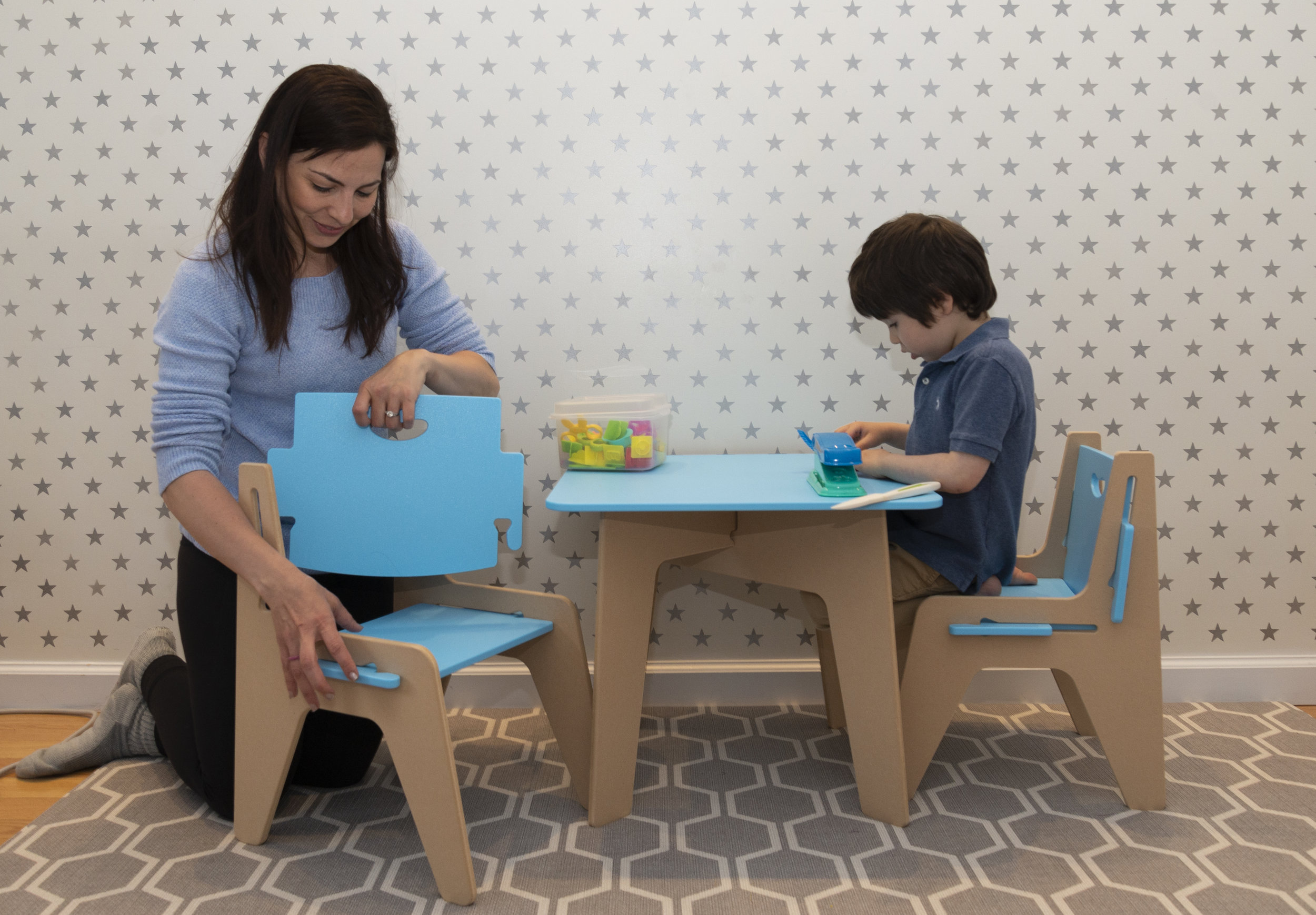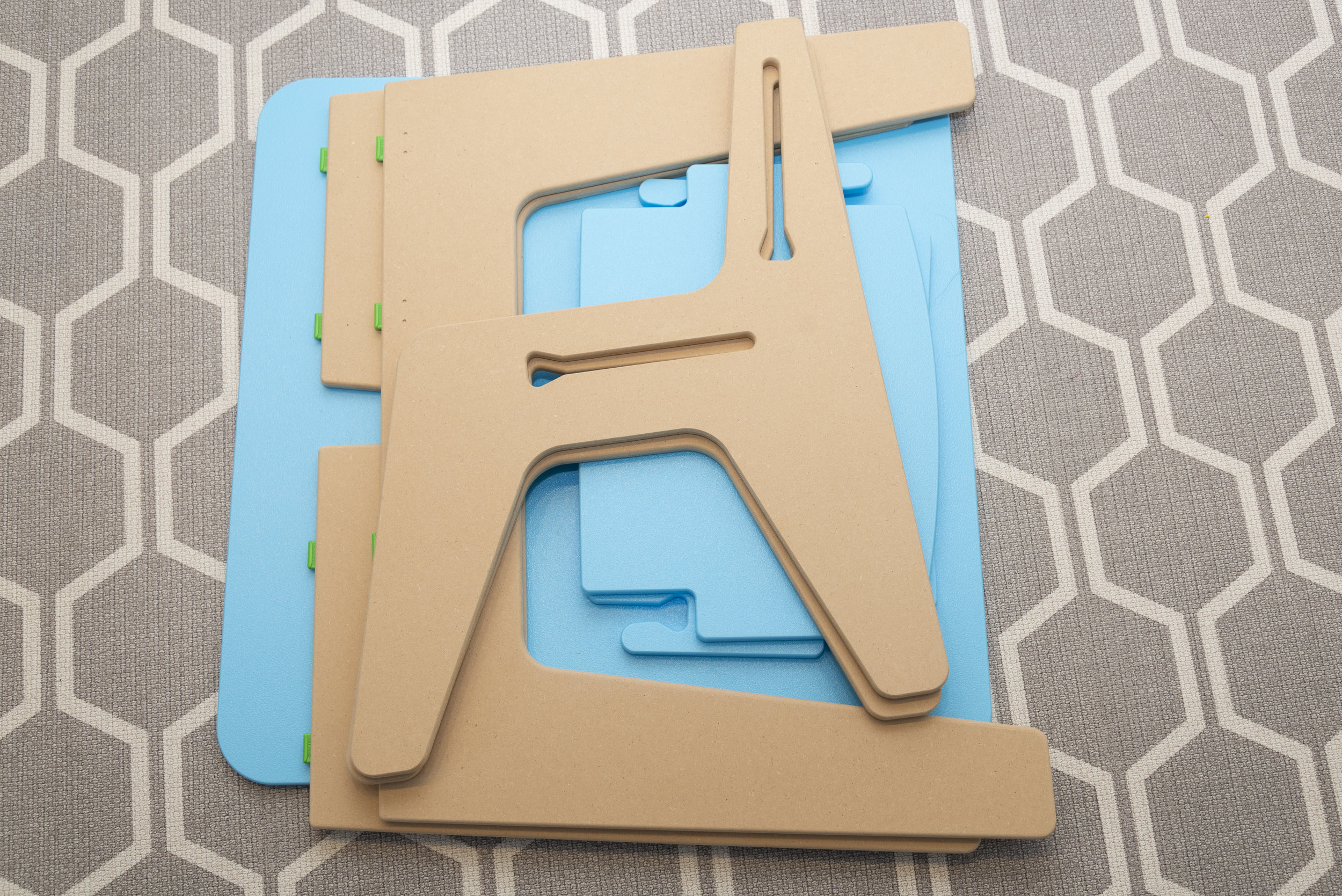Easy Ideas for Creative Toddler and Preschooler Home Sensory Play + Kid Furniture by Together Simply and Discount Code
/As parents, we’re often bombarded with recommendations for classes, activities and the latest toys for our children. I’ve noticed that both my kids enjoy and progress developmentally from quiet play at home, typically engaging with only simple objects, tools and toys.
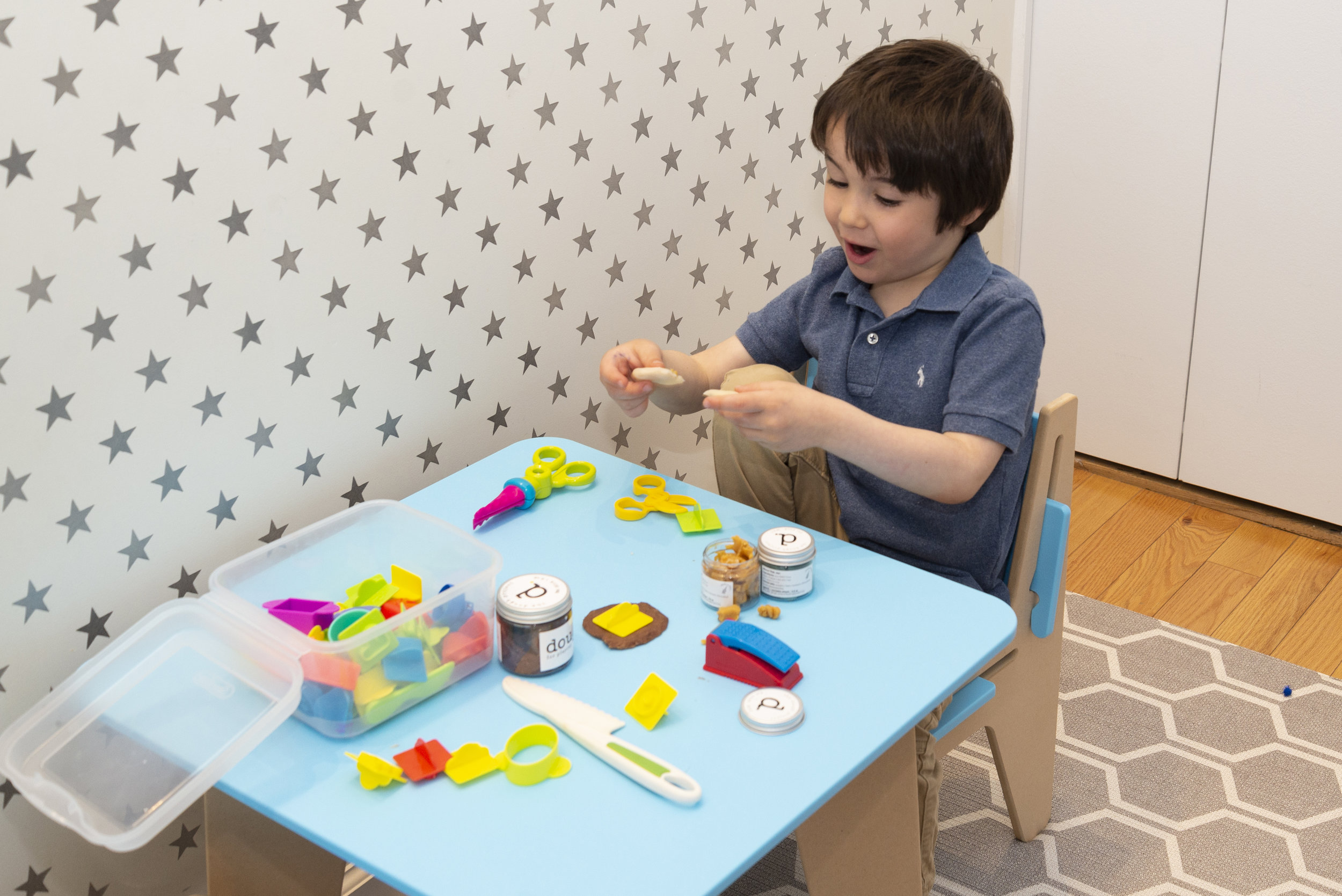
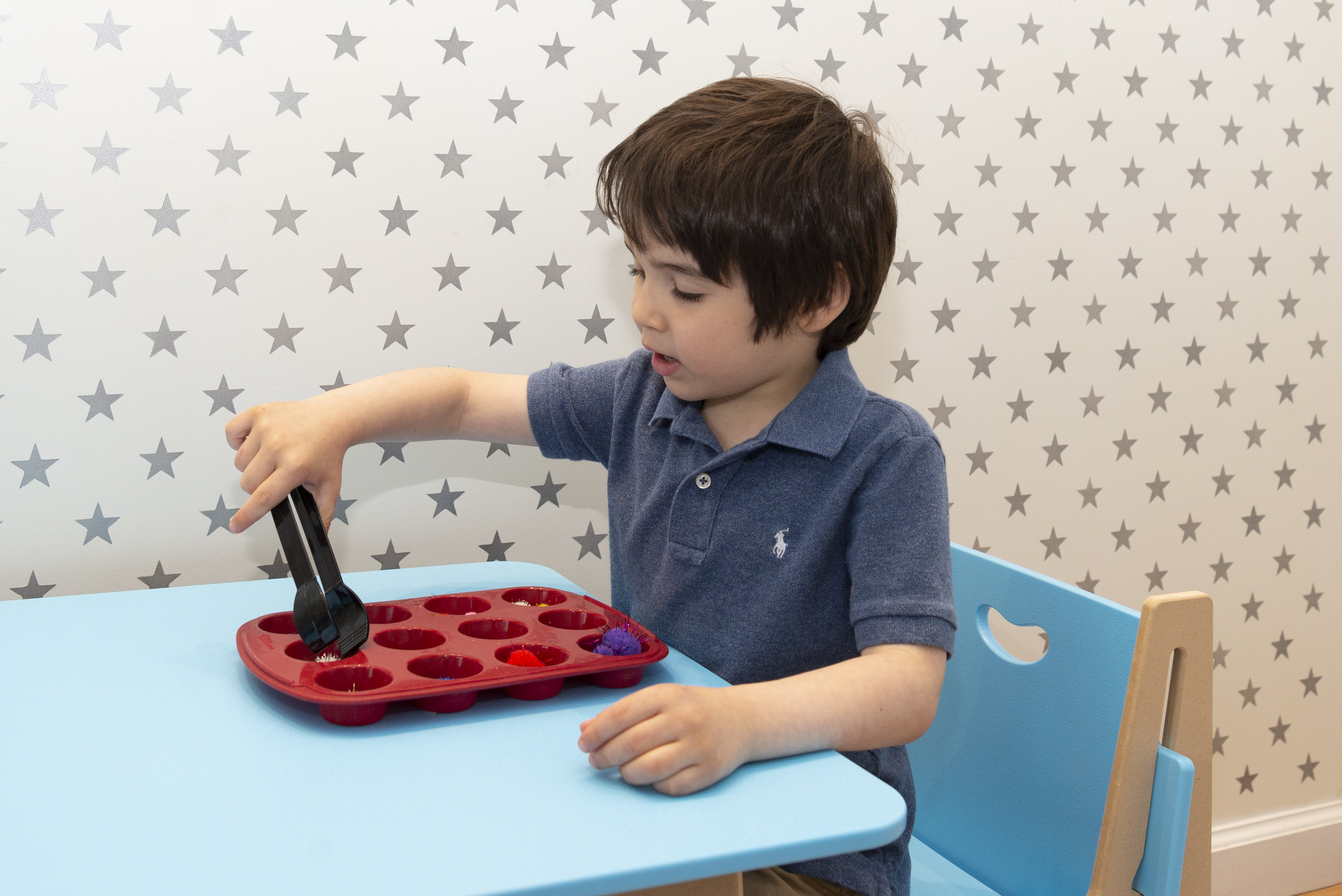
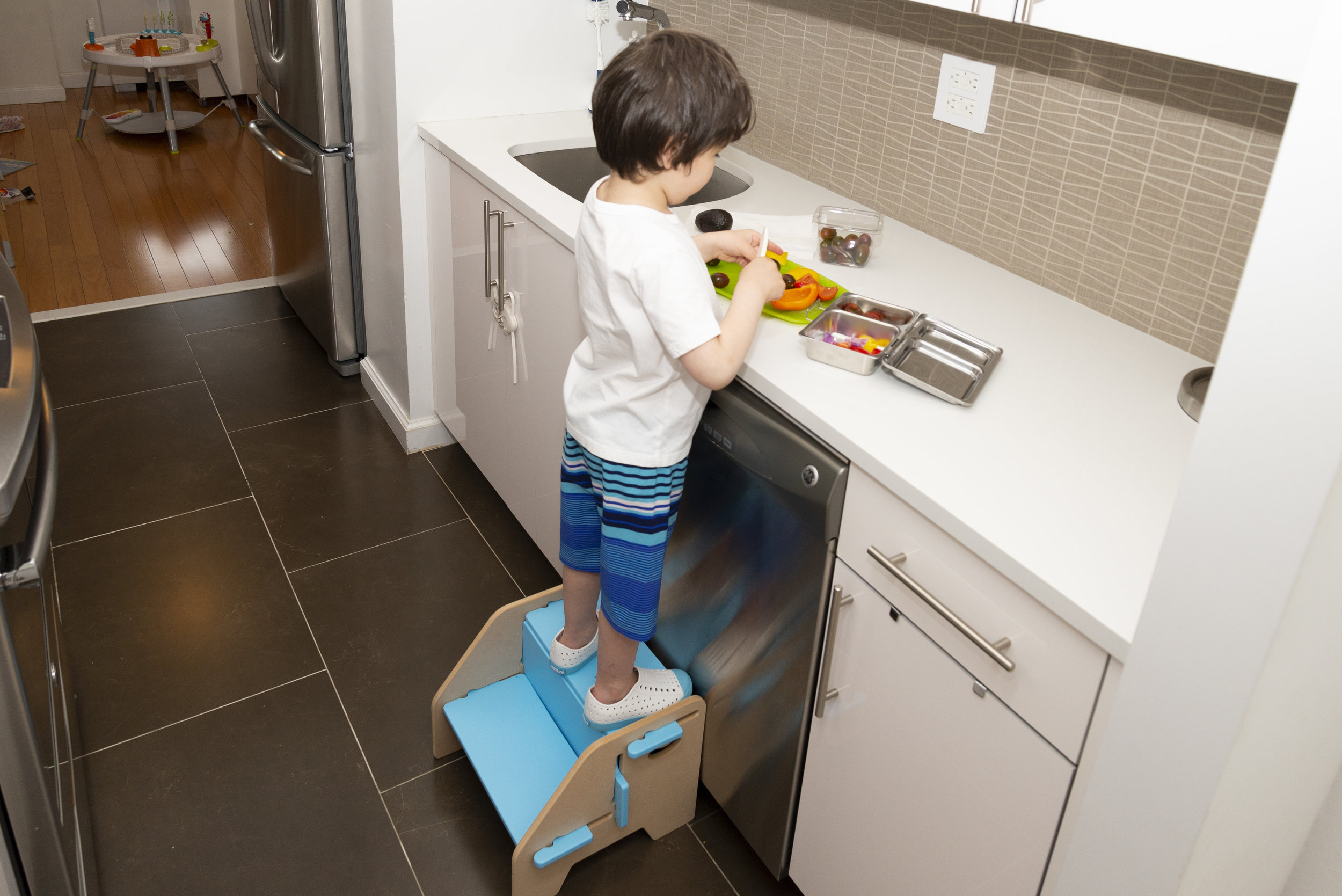
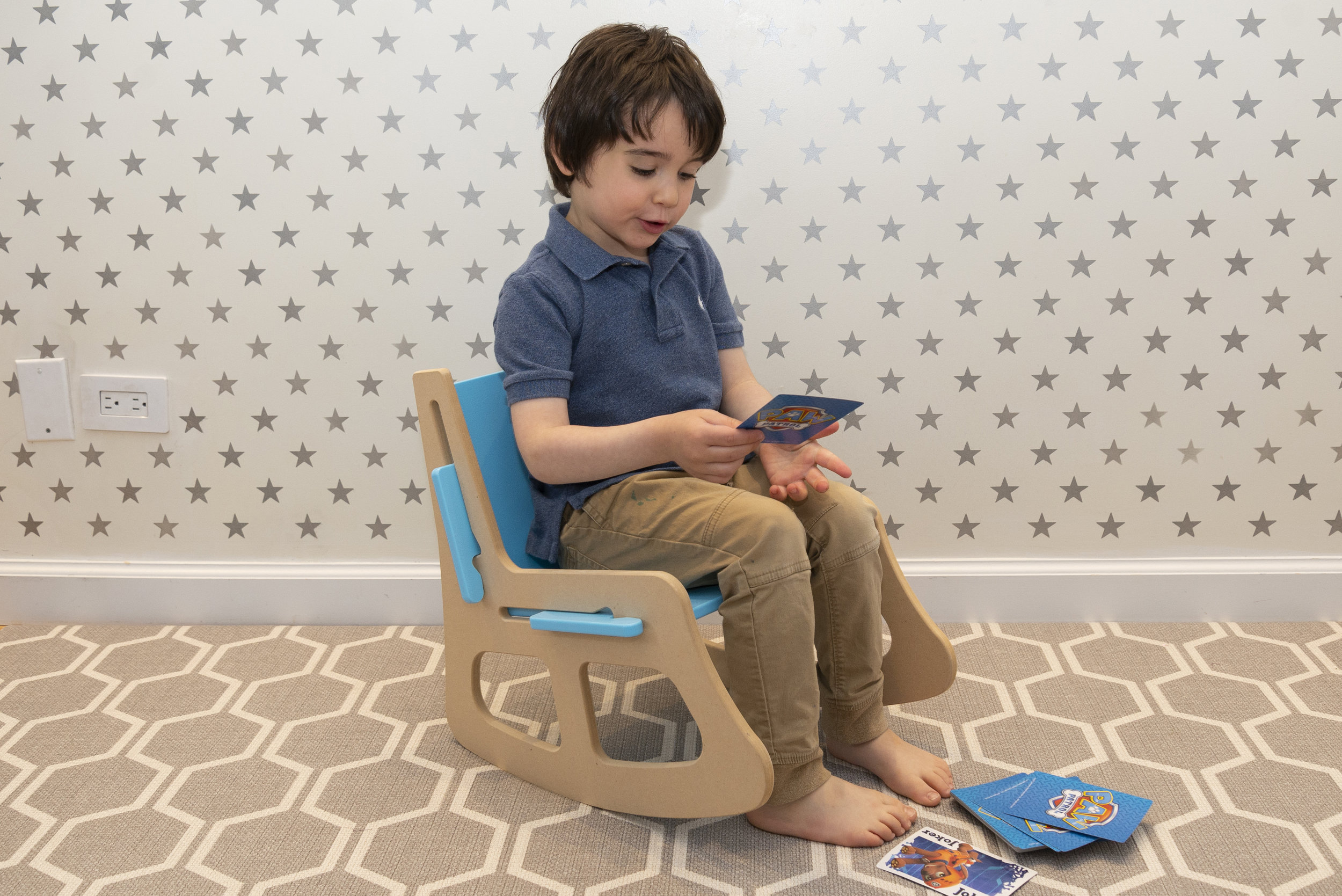
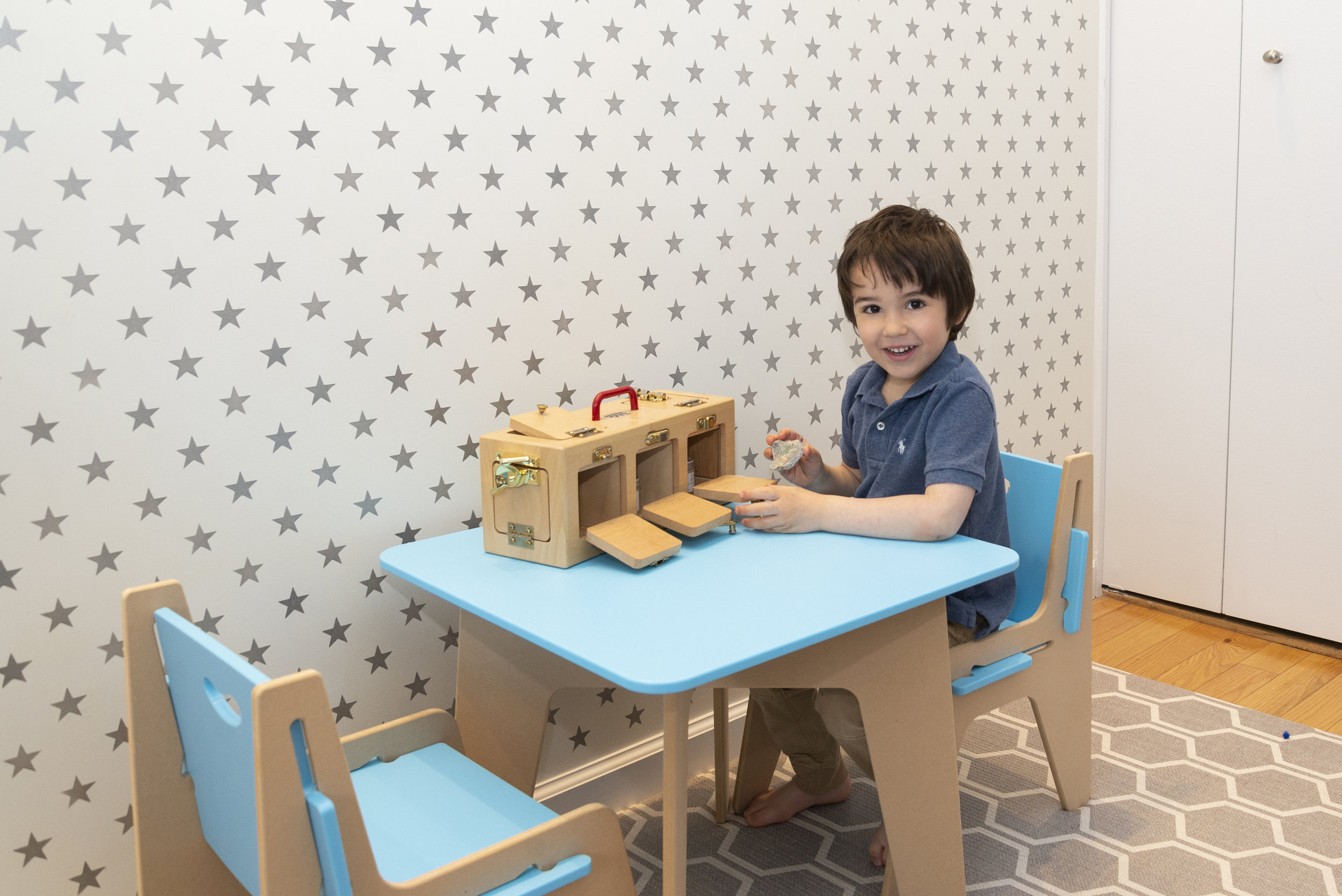
I take my one year old to classes that focus on open-ended play and exploration. These classes also give me ideas for at home activities. One of our favorite classes is The Dough Project Sensory Kitchen, which invites babies and caregivers to “pretend cook” using organic, food-grade ingredients and real kitchen utensils. I sat down with the founder and educator, Chelsea Milkman, to share her insights on creating spaces and ideas for quiet play and exploration at home.
A note on our sponsor, Together Simply
This post is sponsored by Together Simply, an innovative U.S. children’s furniture company. Their furniture is derived from sustainable resources or made from post consumer products, sourced through a responsible supply chain and tested by a third party to ensure all products exceed the most stringent industry standards. The furniture can be assembled easily without any tools, and can be easily disassembled and laid flat when not in use -- which is perfect for space-constrained city dwellers or anyone who wants to entertain without kids’ furniture around. In preparation for company, I recently took mine apart and stored it under the sofa for an evening.
You will see their furniture in use throughout this post and more details at the end of this post. Use code BEST19 For 15% off any Together Simply furniture order. At the end of the post are shoppable images of most items referenced within the post.
This post contains affiliate links. Please see the Disclosure page for additional information.
Setting up your home environment to foster learning, independence and creative play
Big picture considerations
Miriam: Chelsea, you were a preschool teacher for many years. What is a big picture consideration for parents when setting up the home?
Chelsea: As early childhood educators (and parents) our role is to create an environment that supports our children’s learning, provides comfort and encourages them to become confident, independent members of the community (no big deal). Choices we make about everything from furniture and materials to lighting and language can affect our children and really help them thrive.
Concrete tips for setting up your home for kids to thrive
Miriam: That’s all really important! Do you have some concrete tips on creating such a supportive environment?
Chelsea: It’s important to think about the values you have in your home, and then find ways to make those values “visible.” We wanted our students feel capable, independent, and part of a warm, supportive community.
We wanted our students feel capable, independent, and part of a warm, supportive community
Our goal was to make the space feel as “home-like” as possible, so we built our space and routines around that concept. We had a cozy corner for them to wind down and take time for themselves when needed and comfortable-sized furniture that supported their bodies and set them up for success. We presented materials in a way that fostered independence (i.e., they could reach them, and knew when and how they could use them). I also found that having boundaries like defined areas for materials and certain types of play helps kids feel safe and in control (e.g., loud, “wild” play happened in the block center -- but not in the cozy corner). We placed a big emphasis on taking care of our space, so we had child-sized brooms, assigned jobs and always a mini vacuum!
boundaries like defined areas for materials and certain types of play helps kids feel safe and in control
Miriam: What can parents do to create a space that reflects those same values of community, independence and comfort at home?
Chelsea: Clearly define certain areas of your home for certain activities, so children fully understand their expectations. In the kitchen, children help with “kitchen things--dish washing and meal prep. Creating a soft, cozy area with a few pillows and a canopy is a great way to start a cozy corner. This space becomes a wind-down zone, a place for fine motor work and quiet play. If it’s inviting and engaging, it will become a space your children want to be in - and not a “time out” space.
Give your child a sense of independence in the home by ensuring that he can see and access at least some toys on his own
Give your child a sense of independence in the home by ensuring that he can see and access at least some toys on his own. Also provide a step stool to help your child reach the sink for brushing teeth or help with food prep at the counter.
provide a step stool to help your child reach the sink for brushing teeth or help with food prep at the counter
Miriam: I agree! We keep toys that are used daily in open baskets, and others in clear bins that are in cabinets within Sam’s reach (more in my article on organizing the home). He has the option to play for long periods on his own and enjoys his independence — often narrating his actions for me without asking for help.
We use a stepstool most when Sam is helping in the kitchen, but he will often bring it where he needs it -- including to the kitchen to help with or observe food prep, or to the nursery to help change his sister’s diapers.
Play ideas for toddlers and preschoolers
Miriam: What are your top tips for activities to do at home with a toddler or preschooler?
Chelsea: My top ideas would be to involve the kids in meal prep, playing with (and even making) play dough, and provide opportunities for age appropriate open-ended exploration (whether through simple crafts or sensory activities, or toys and games)!
involve the kids in meal prep, playing with (and even making) play dough, and provide opportunities for age appropriate open-ended exploration (whether through simple crafts or sensory activities, or toys and games)
Miriam: Let’s go through those one by one.
Meal Prep
Miriam: I love involving my son in meal prep! We bought a set of kid-safe knives after seeing them in his preschool classroom and he helps cut veggies for salad most nights. He also helps with meal planning and shopping (he chooses a vegetable at the farmer’s market or supermarket), which increases the likelihood of him actually eating the food. I’m sure there are countless benefits to involving kids in the kitchen. Can you share some?
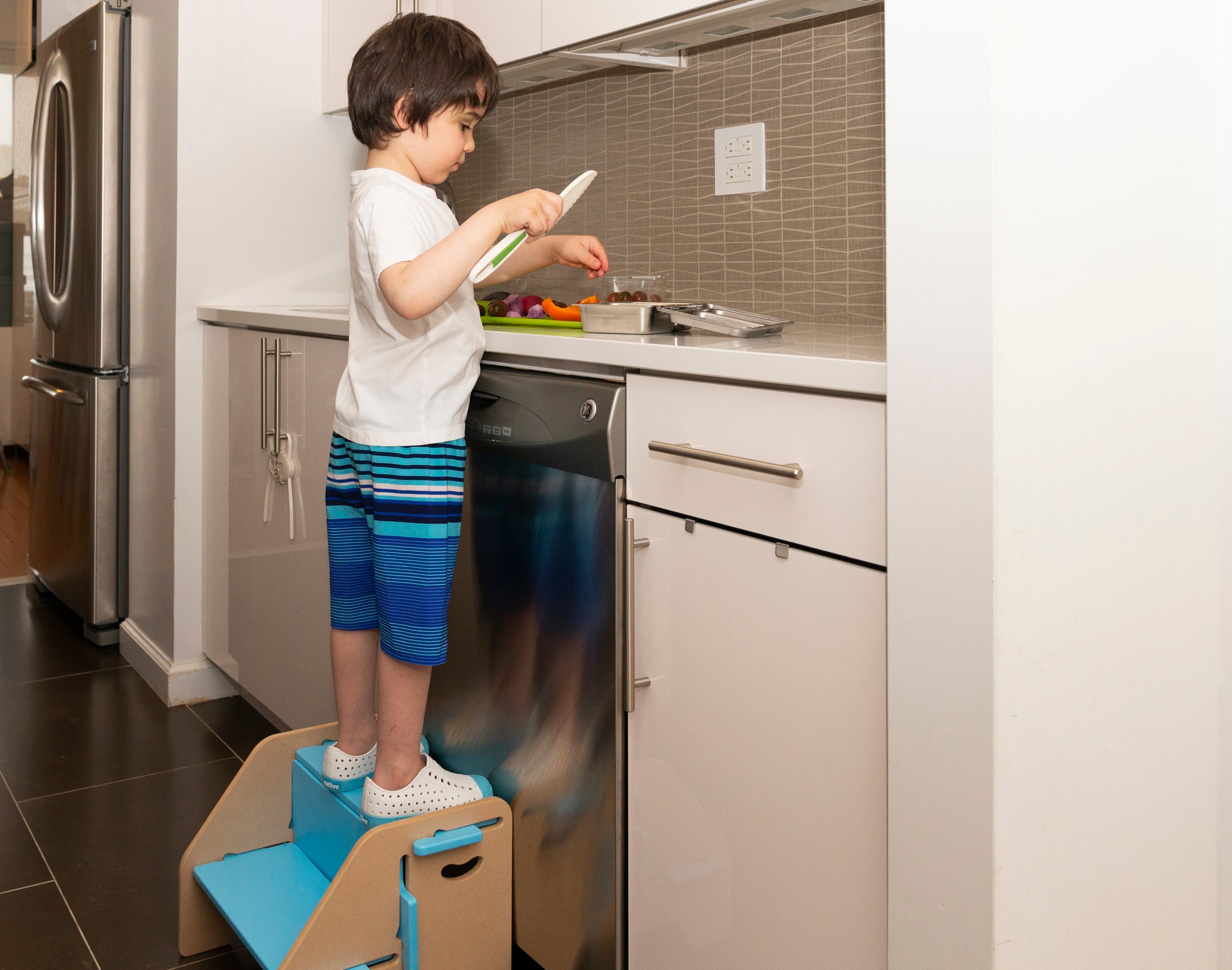

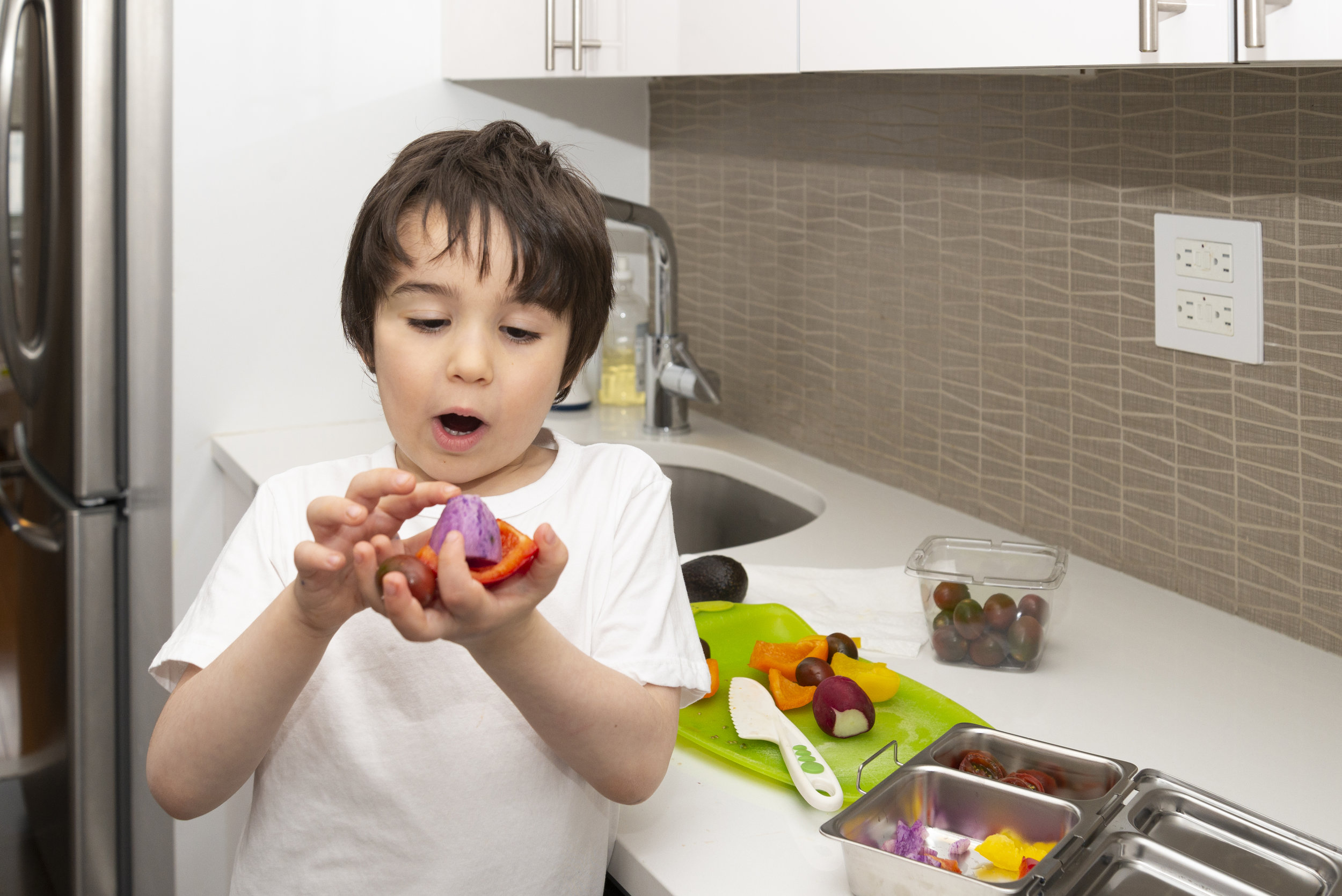
Benefits of involving kids in the kitchen
Cooking supports kids’ early math skills, fine motor skills, confidence, independence, healthy eating habits and special moments.
Chelsea: Absolutely!! Cooking supports:
Early Math Skills — counting, 1:1 correspondence, measuring, size concepts,
Fine Motor Skills — cutting, slicing, using a knife, pouring, mixing, etc.
Early science concepts — properties of matter, heat effects, etc.
Confidence and independence — children like to do things “all by themselves” and they feel proud when they help to accomplish something. Participating in meal prep builds their self esteem. “I made this. It’s delicious!”
Healthy / less picky eaters — as a teacher, if I gave my students cucumbers for snack, they wanted nothing to do with them. However, if they peeled and sliced the cucumbers themselves, they ate them all! When children feel in control, they are much more inclined to be experimental.
“Special Moments” — cooking with kids is a wonderful special time. It’s peaceful, productive and fun! You’ll laugh together when things fall on the floor and get excited when a successful slice is made.. And as batter forms and muffins rise, the “noticings” will leave you all feeling very proud.
PS. have them help with the dishes too! Even if it turns into some added water play, it’s all part of the experience!
Play Dough
Miriam: You also mentioned play dough. We love to make play dough together (here’s our no-fail recipe) and a batch can last months! I’ve found it to be great for my son’s fine motor skills. You’re the play dough expert, so I’d love for you to share some benefits and ideas for keeping it fun while helping to develop skills.
Benefits of play dough
Chelsea: Play dough is an amazing tool in that it’s really beneficial, incredibly fun and can be used in countless contexts. It supports growth across developmental domains: supporting language development, fine motor strength, cognitive and social skills.
Play dough supports growth across developmental domains: supporting language development, fine motor strength, cognitive and social skills
As a teacher, play dough was a staple in my classroom — always available during work time and in our cozy corner for cool down times. It’s a tool that soothes, focuses and gets kids talking. They begin to make sense of early math concepts like “a lot” and “a little.” They make birthday cakes and offer them to you, learning to share, use new words and show understanding of pretend and representational concepts. When played with on trays and contained spaces, play dough can be an amazingly calm sensory experience that isn’t too messy, and is a great tool to use during transition times or to wind down before bed. Plus, many Occupational Therapists use play dough to build strength in little hands.

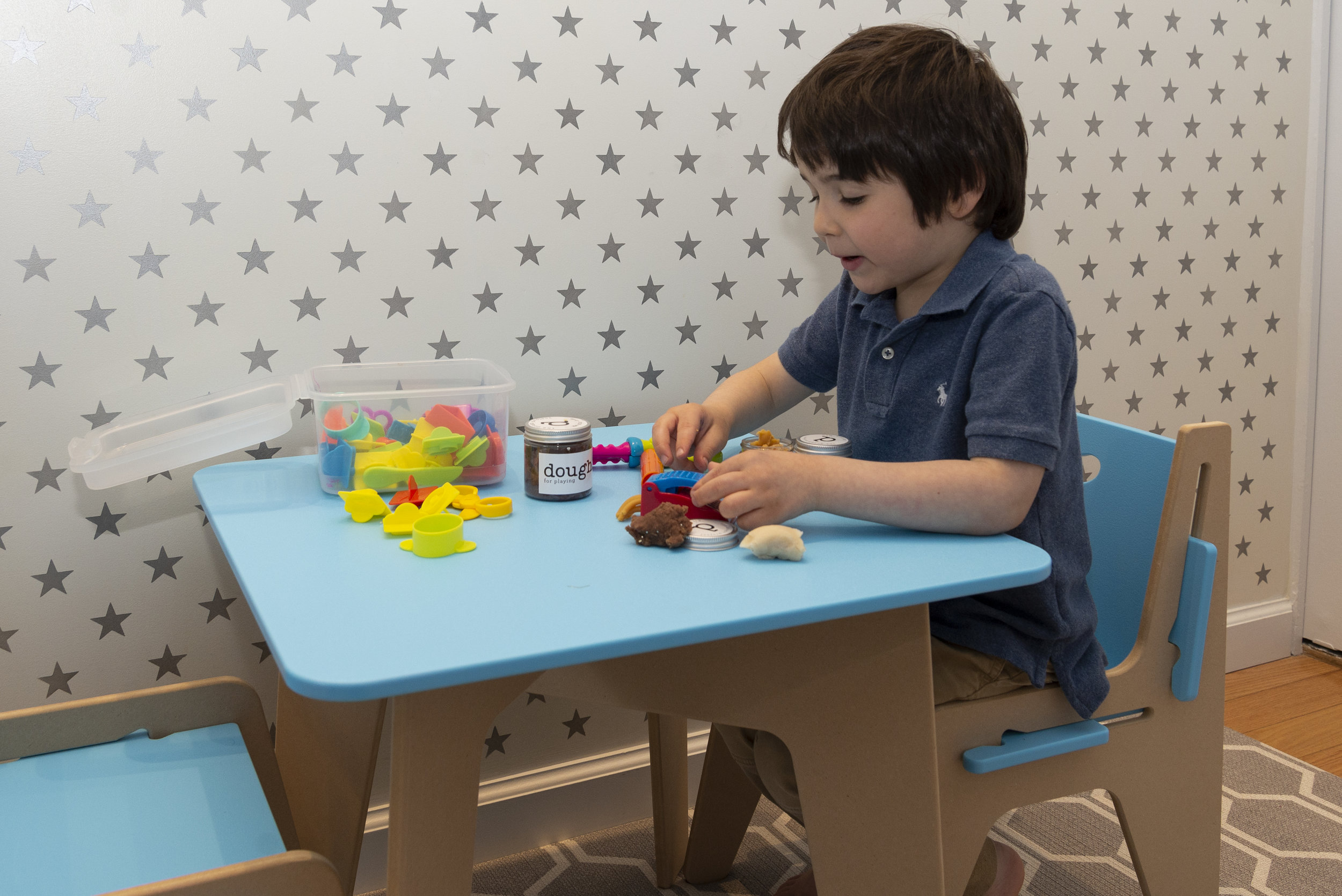
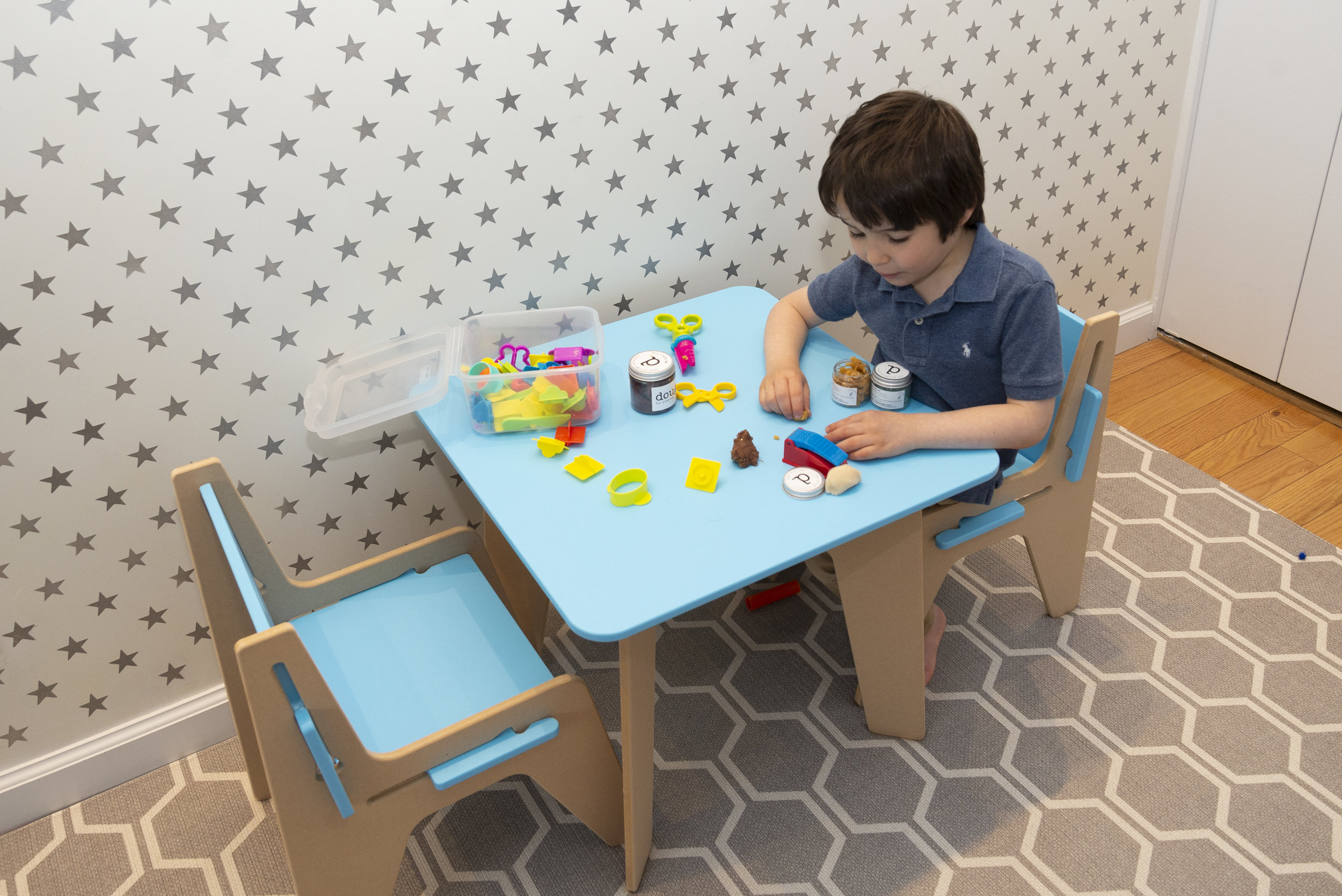
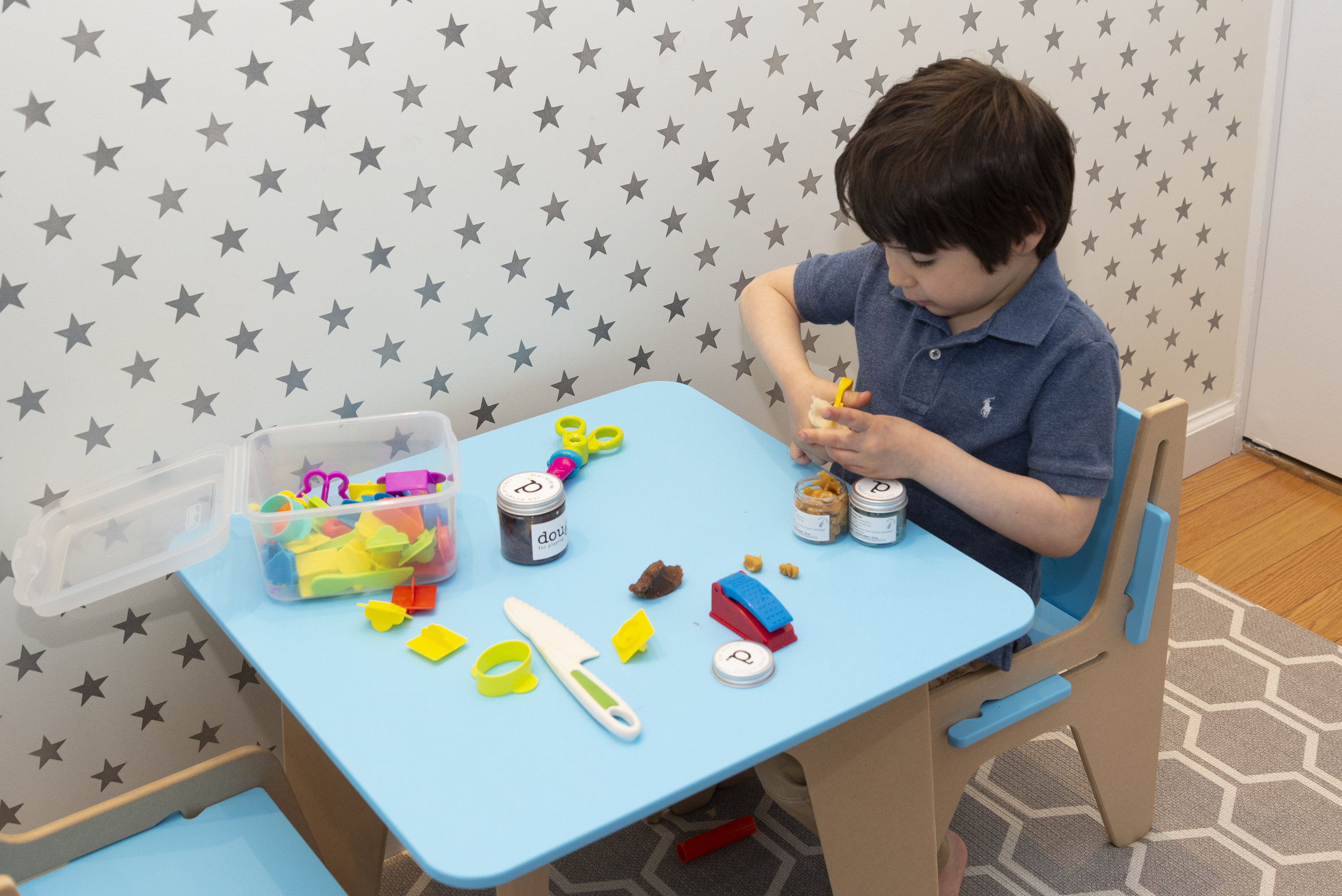
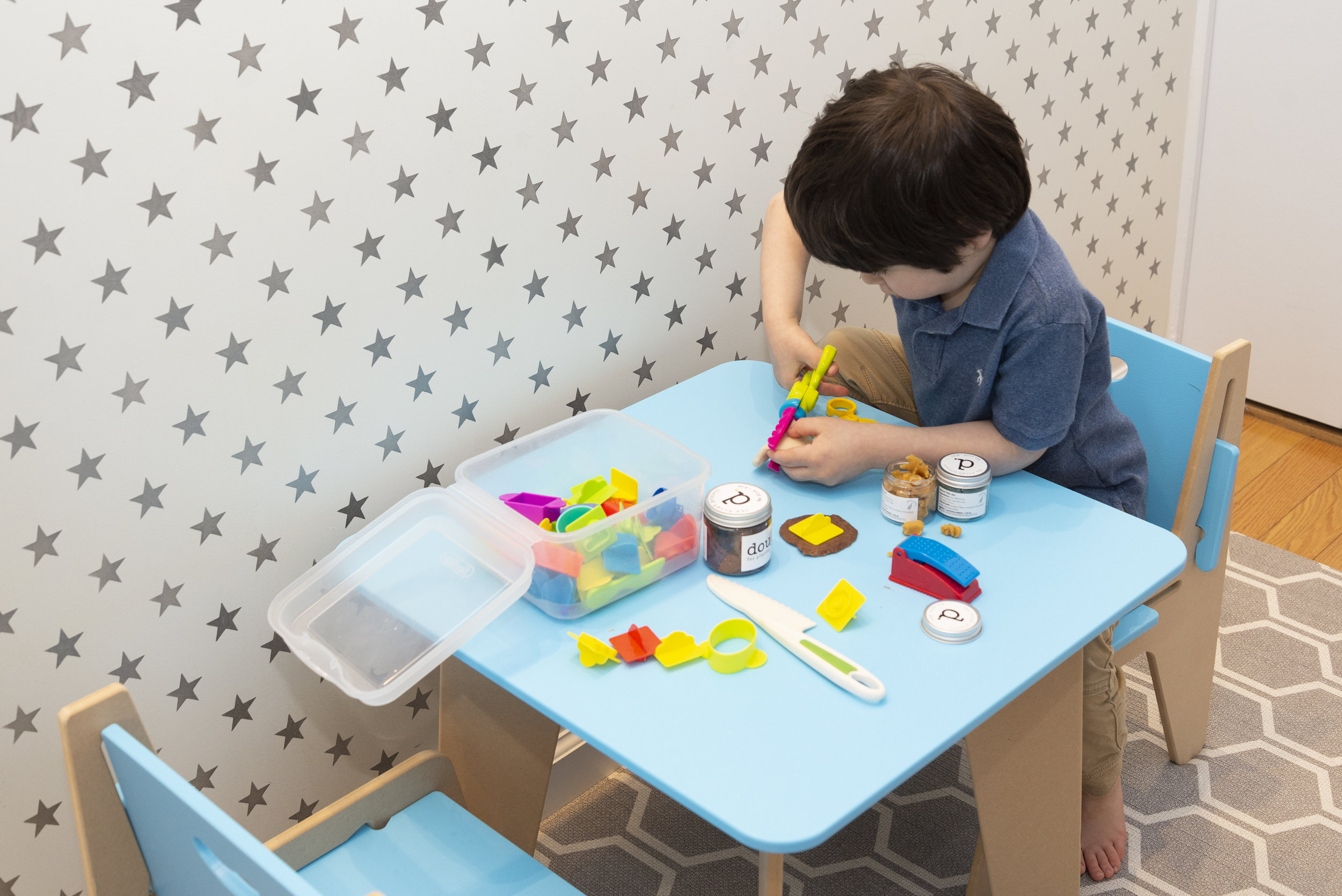
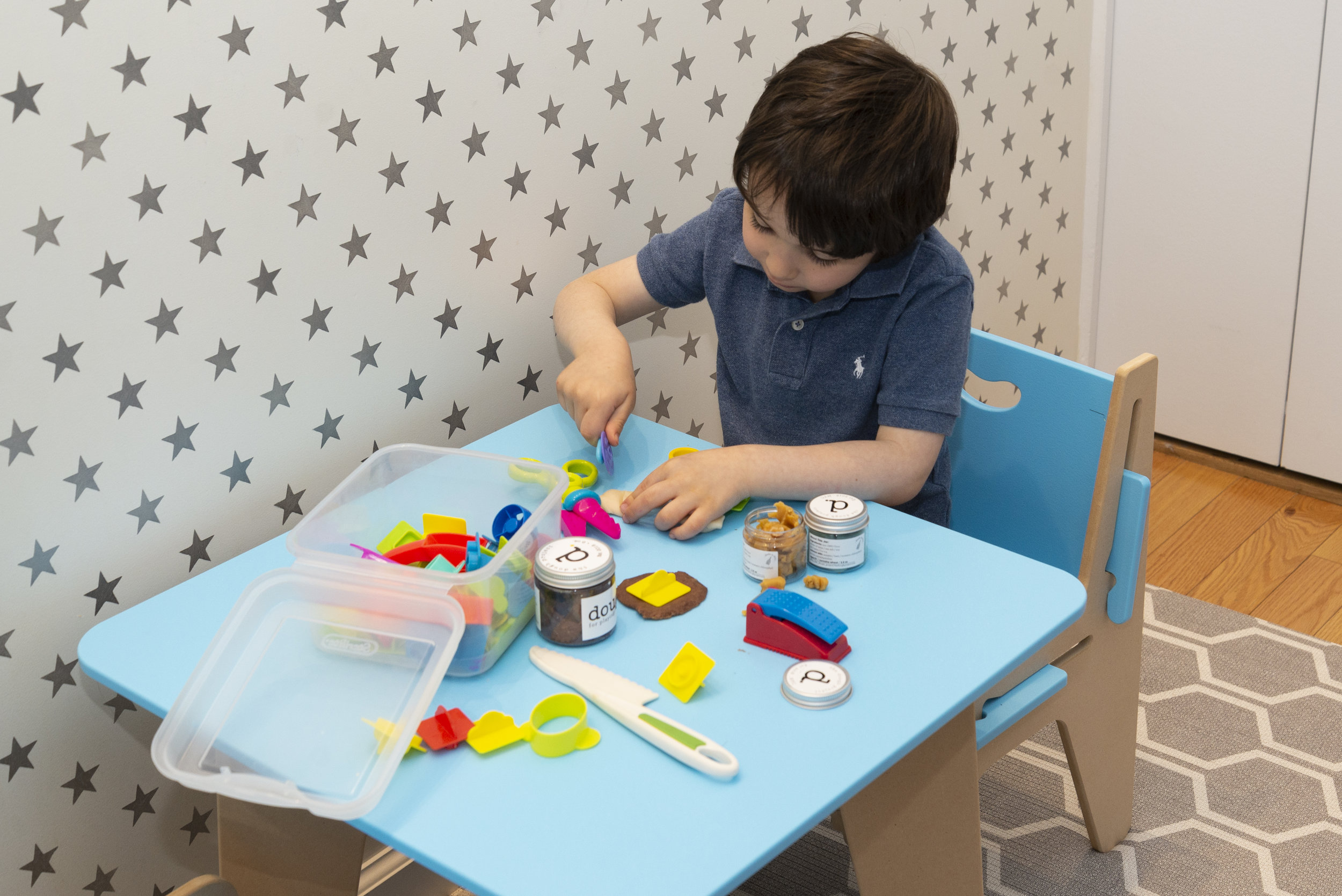
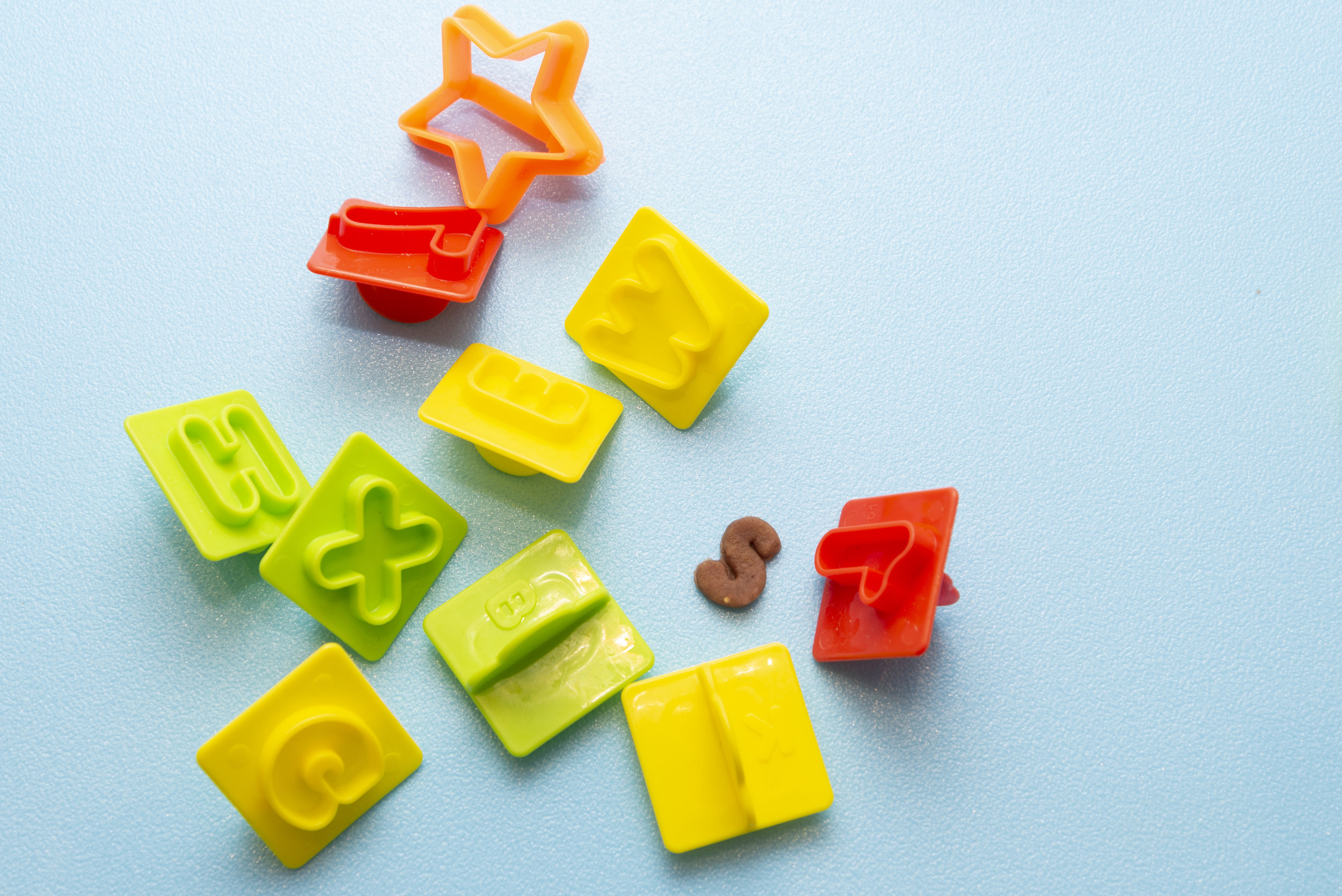
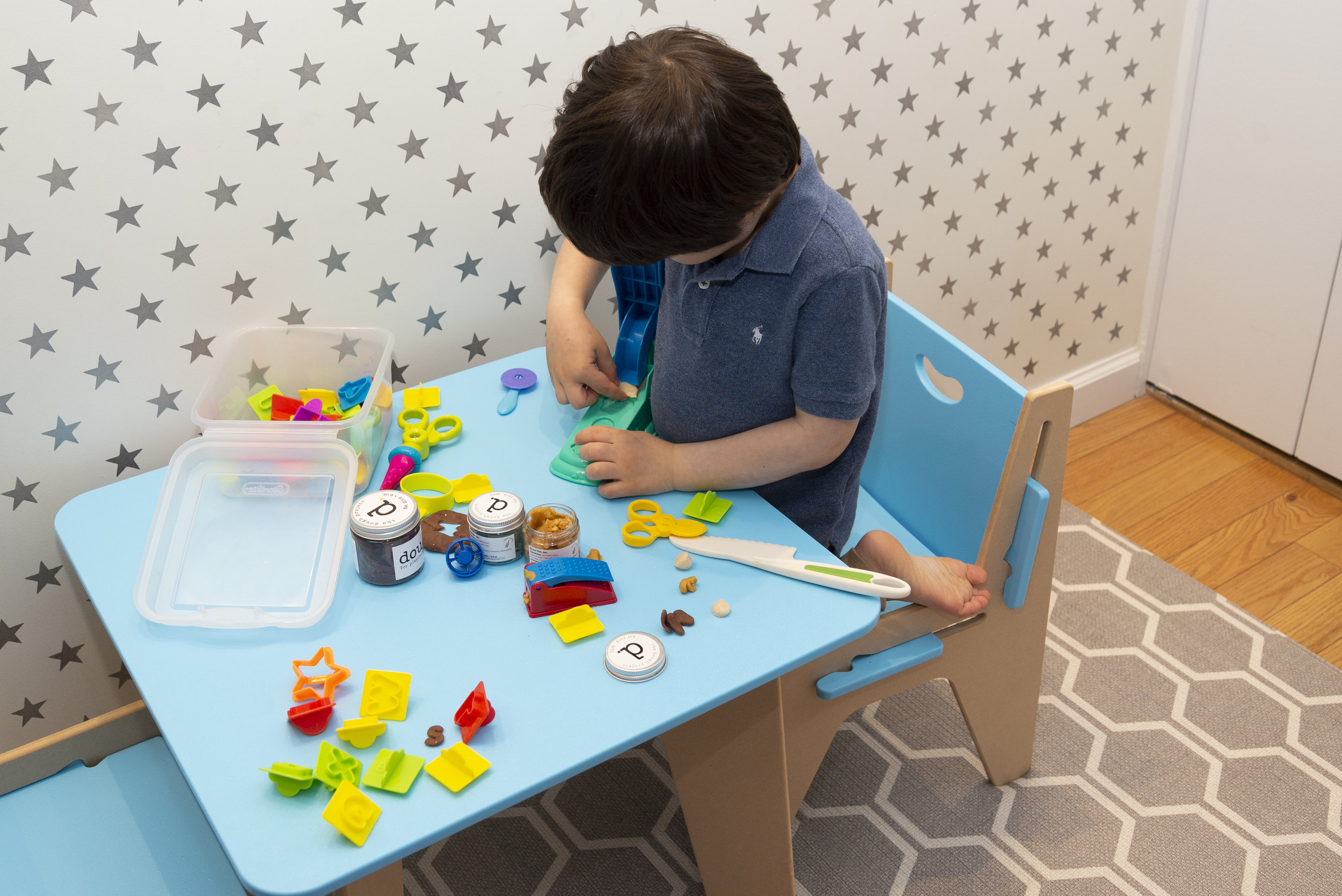
Miriam: Yes, my four year old loves play dough! He has really evolved in how he uses it. Now that he is motivated to learn to read he cuts out letters and works on forming words! Your dough favors were a huge hit at my daughter’s birthday party too!
Creativity with play dough
There are lots of great play dough tools on the market. But play dough can also be paired with loose parts from around your house! Think: qtips, keys, forks, anything textured that will make a design in the dough. You can even put play dough inside a balloon to create a non-traditional “stress ball” that can be very soothing to hold during stories and wind down times.
Other Easy Sensory and Craft Ideas
Miriam: I get a lot of requests from my followers for non-tech toddler and preschool play and craft ideas that aren’t messy. Some things that my four year old enjoys are writing on a slate cheeseboard with soapstone (which he then cleans himself with a wet cloth or baby wipe), threading necklaces (he uses a beading set or food pouch tops on a shoelace), playing with shaving cream in an empty bathtub, and building with blocks or magnetic tiles.
Can you share some other simple craft or sensory ideas that parents can do with toddlers and preschoolers?
Chelsea: The possibilities are truly endless! Some ideas off the top of my head are
painting with unconventional materials like fruit stamps, bubble wrap or qtips,
painting with water on a chalk or slate board — just put out a small cup of water and a paint brush. Children can paint with water only and watch as the water dries up and their design “disappears.”
using tongs to sort pom poms in muffin tins (this is great for building fine motor skills and is a perfect activity to do in the cozy corner)
Limiting the mess
Miriam: Any specific tips for limiting the mess?
Chelsea: Sensory play and crafts do not always have to be messy! Here are some tips:
Let a toddler explore finger paint through a Ziploc bag.
Put out a sheet of contact paper, sticky side up (can use painters tape or master tape to affix it to the floor or wall) and small pieces of paper (or even flowers or leaves) for them to make designs that stick!
Sam’s class was studying flowers and plants and made this with contact paper.
Cut up pieces of felt into different shapes, and offer large pieces of felt to act as a design board. Felt shapes stay in place without glue -- and can be moved around again and again to create different designs.
Dry erase markers work well on glass doors — you can have your child color or find and circle objects, letters or words that you draw
For messier activities, play in an empty bath followed immediately by an actual bath. It’s important that messy, stimulating play has a designated area and doesn’t enter sacred places like your cozy corner.
More on repurposing and reusing
Chelsea: I’m a big believer in loose parts, open-ended materials and playing with things you already have at home. Think about things that have multiple purposes: large plastic jars can become shakers with different knick knacks inside, and reused again and again in different ways. Add cotton balls, spoons, coins -- anything that fits inside and compare the sounds!
Miriam: I love all of these ideas, and especially love your ideas of using what we already have on hand. We have leftover pom poms from a project and red mini buckets from centerpieces for Sam’s birthday, you inspired me to use them similarly to what you described with the muffin tin.
Chelsea: When you get into the mindset of looking around your home for “loose parts” your creativity will start flowing! Think about things with “cool” properties like a salad spinner (put colorful items like pompoms or fairy lights inside and watch them spin)! Clementine crates have holes at the bottom -- perfect for sticking things in like pipe cleaners! And I know that your son loves his lockbox and little figurines, those also present endless opportunities for open-ended play.
This lockbox was pricey but so worth it. Sam has been playing with it daily for years in endless ways.
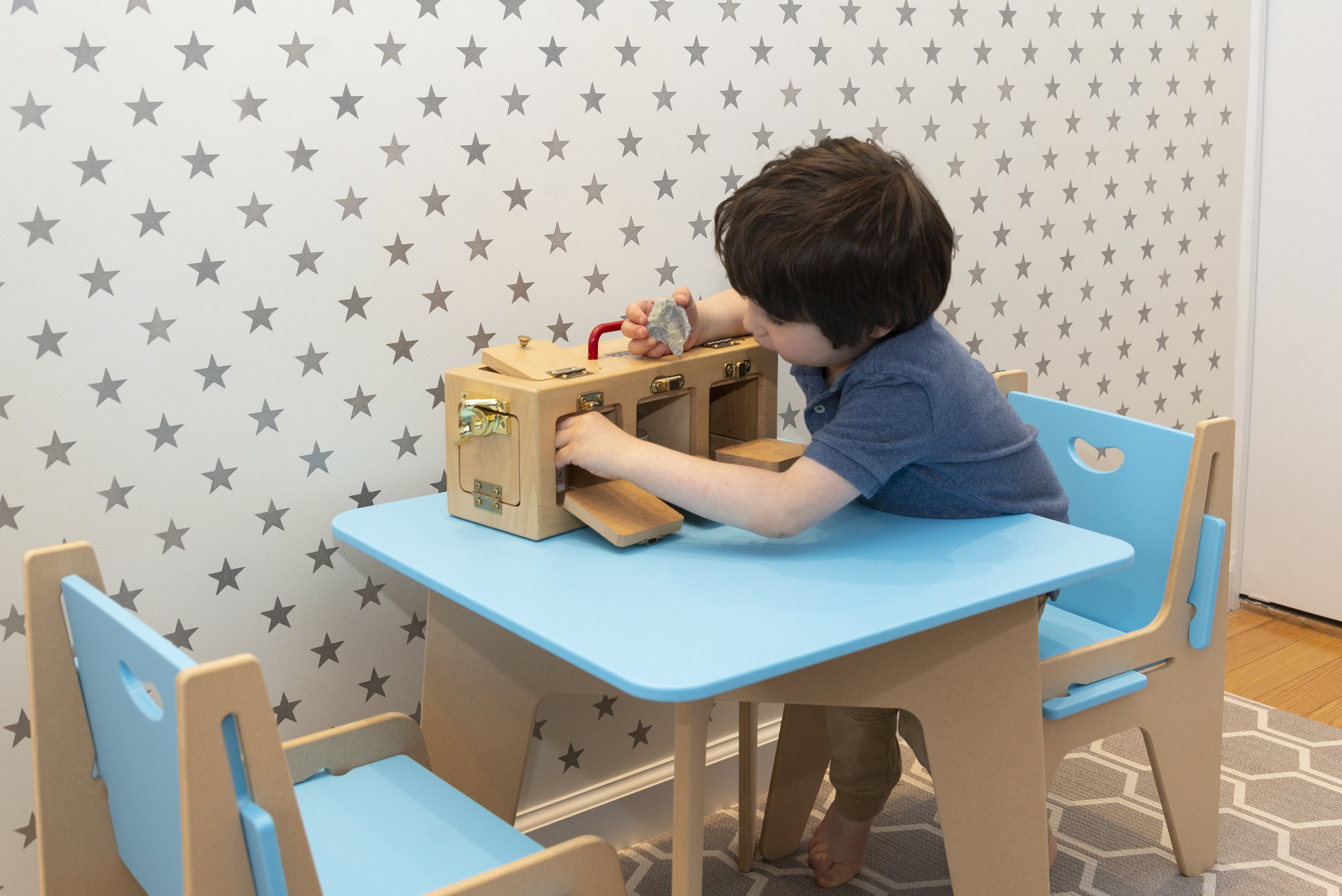
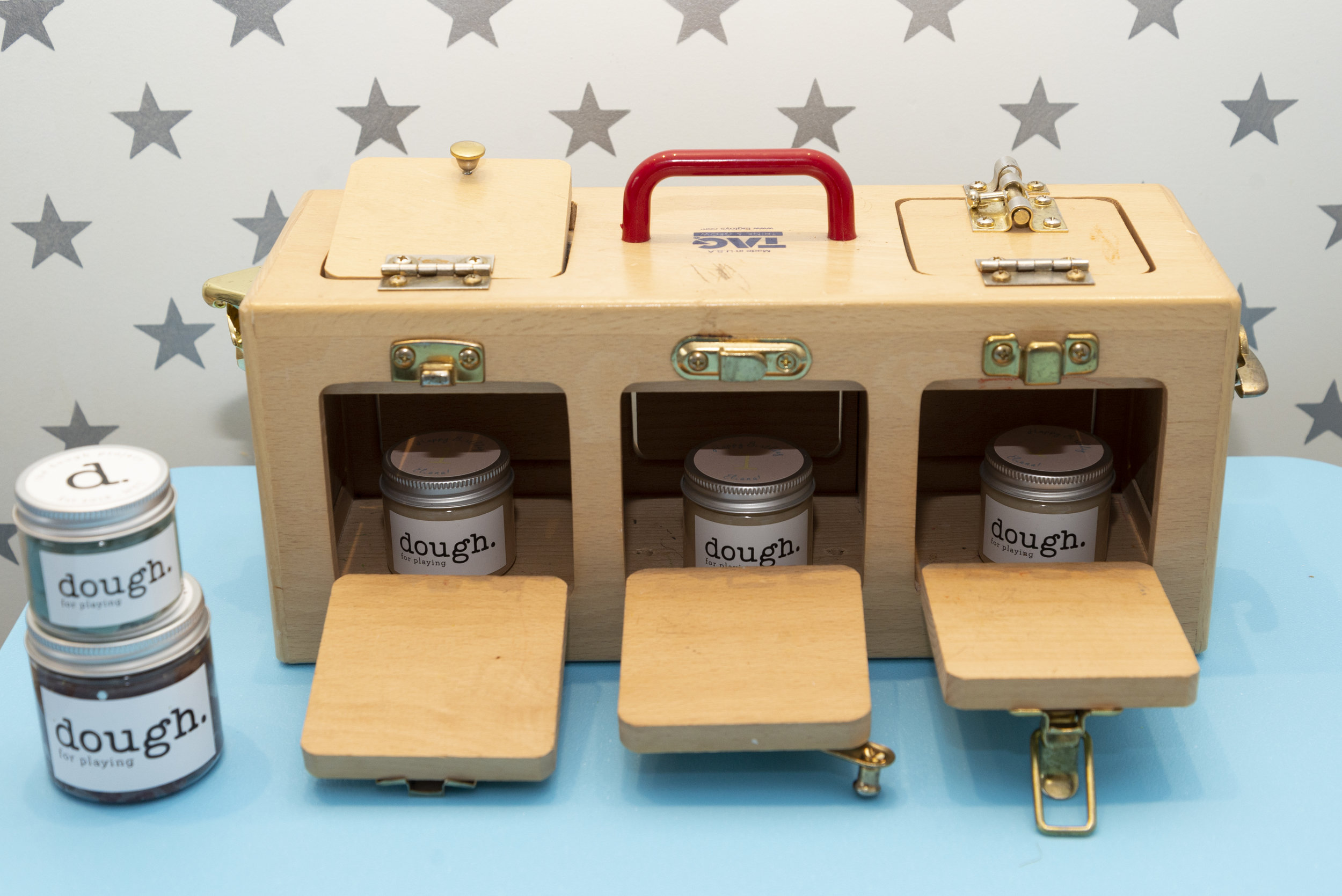
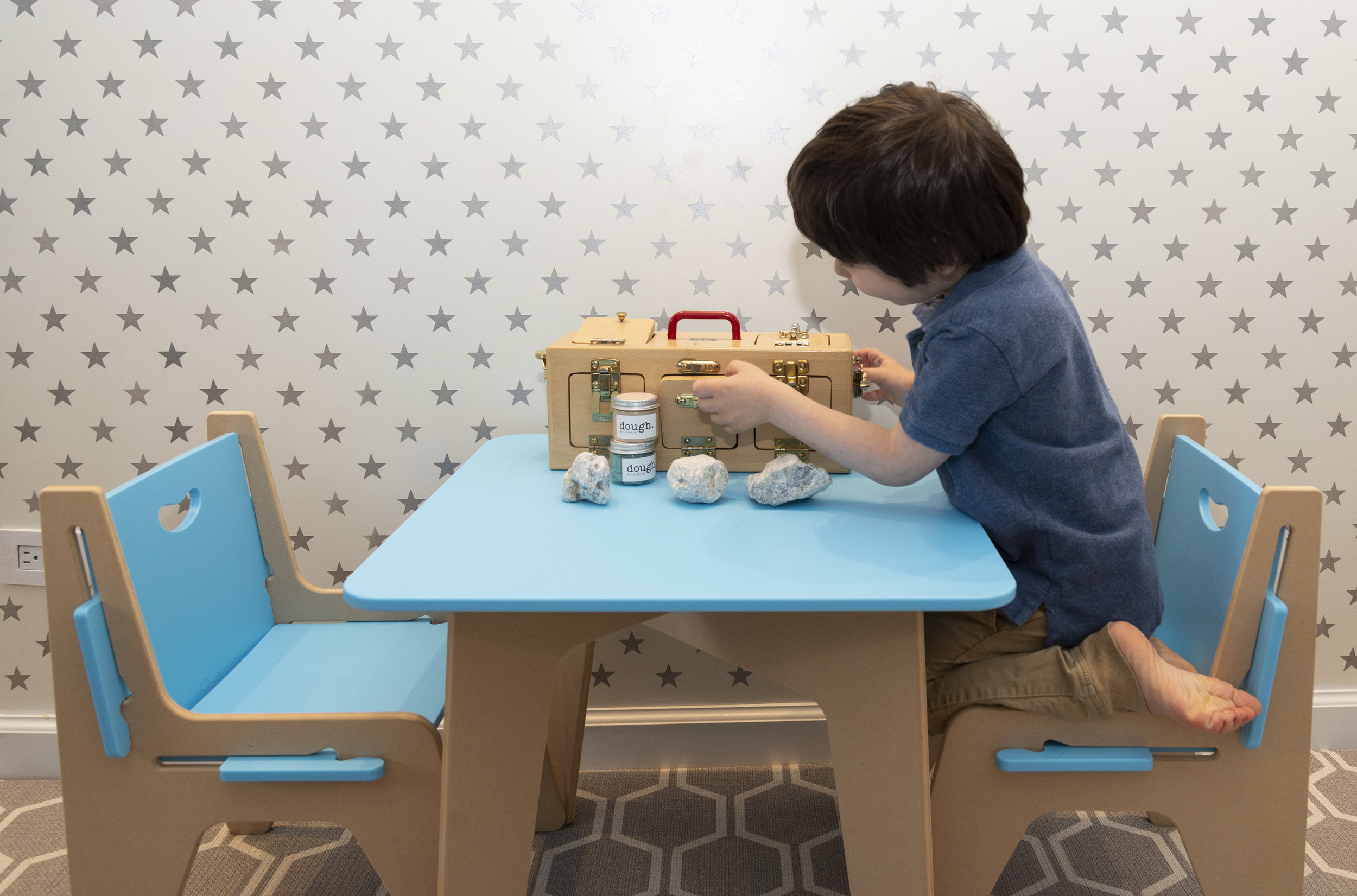
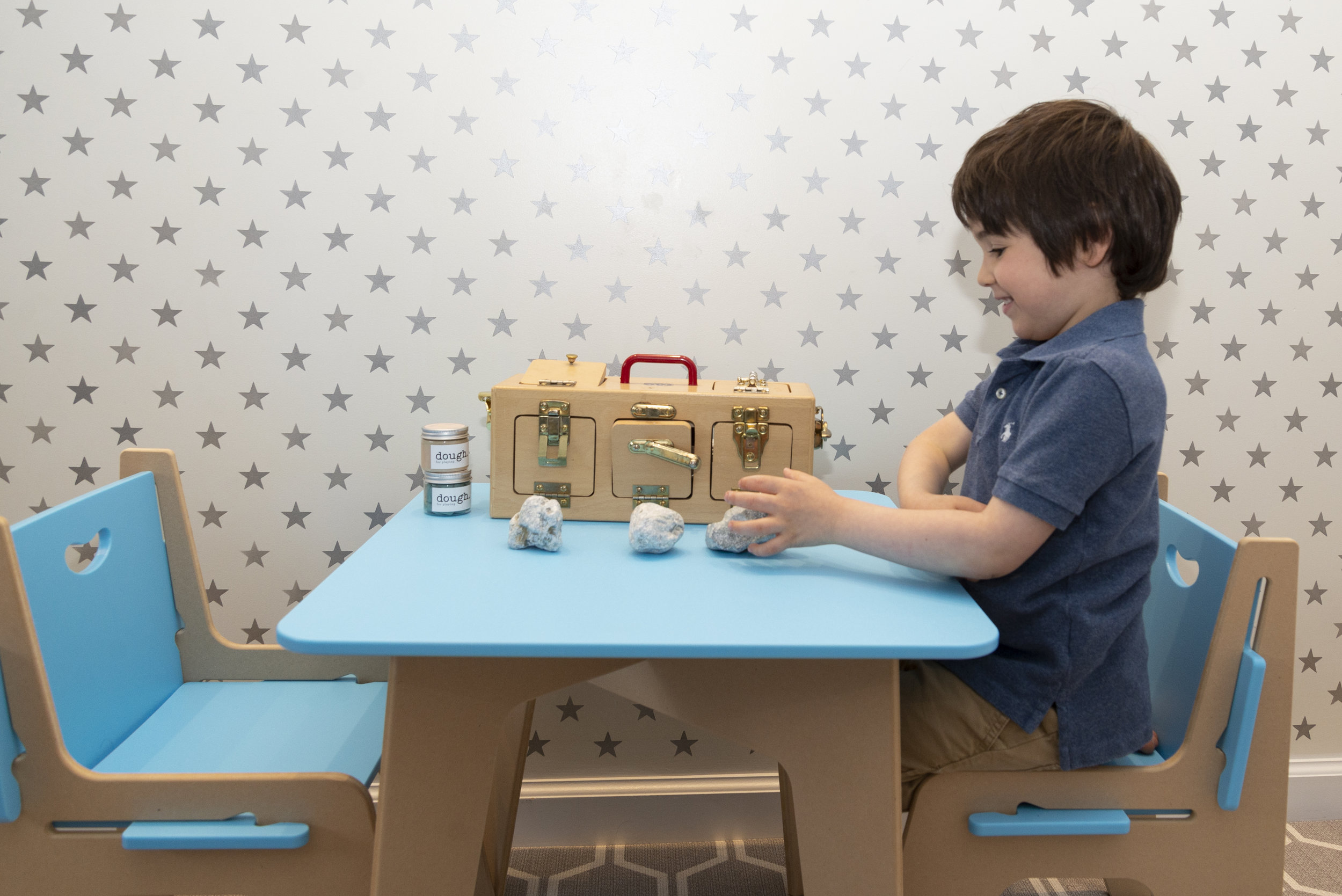
Miriam: What about the child who has a hard time unwinding? Any tips for getting her still enough to enjoy the activities outlined above?
Chelsea: Rocking chairs provide constant, steady movement keeping children in motion, even when they are sitting still. We always had a rocking chair in my classroom. My most “fidgety” students, the ones who seemed to always be moving around no matter what, could find stillness when rocking. They could listen to a story, participate fully in meeting time, and self-soothe quicker when rocking. We moved the rocking chair all around our classroom as needed.
Miriam: Chelsea, your ideas are all great.I find that the more of these activities we do, the more ideas that we have. My son and I (both separately and together) come up with new ways to play with toys and non-toys all the time and he has even come up with recipe ideas! I’m sure that as parents put them into play in their homes, they will develop their own creative play ideas!
More on Chelsea and The Dough Project
New York City based early childhood educator and entrepreneur, Chelsea Milkman, founded The Dough Project to provide families with opportunities for hands on open-ended sensory play. After teaching preschool for nearly 10 years, Chelsea set out to build a brand that represented the values she developed as a classroom teacher to support families at home. The Dough Project provides quality, plant-based materials and curated experiences that encourage uninhibited exploration, creativity and fun!
The Dough Project merchandise is available http://bit.ly/dough-project.
More on Together Simply + Discount Code
We’ve been using this furniture in my home for a few months and love it. It looks great in our home, the ease of assembly, disassembly and efficient storage is perfect for our home. Together Simply includes video instructions on their site for each piece. Once I put together a couple of pieces it became intuitive and I’m now able to assemble any piece in under two minutes and disassemble any piece in seconds. We love supporting brands that focus on sustainable and practical products, as well as family businesses when possible. Together Simply checks all three boxes!
Check out how easy it is to assemble / disassemble. The second photo is of the table and one chair disassembled and laying flat.
Use code BEST19 For 15% off any Together Simply furniture order.
Shop the Post
See above for Together Simply furniture discount.
